Our journey through Morocco continued from Fes to the Sahara desert– nearly 4 million square miles in size and the largest hot desert in the world. In other words, there is a lot of sand.
It’s pretty amazing to me how, when there is a large quantity of one thing, it takes on the characteristics of something entirely different. Sand is simply rock that has been broken down over centuries by the elements into a near-powdery substance. It covers the desert like waves of water. It blows like dust. It also slips, crunches and sinks like snow.
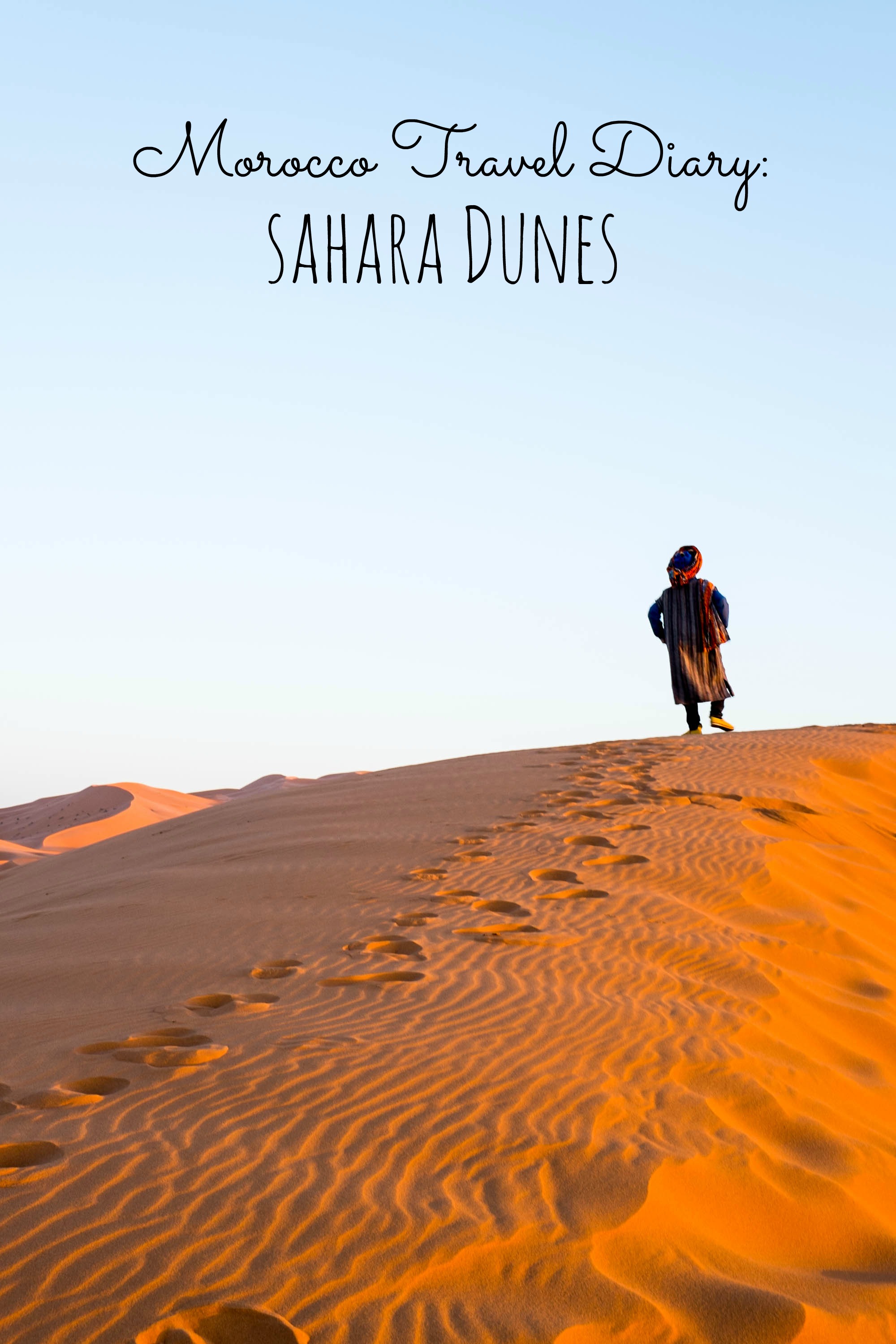
If you ever travel to Morocco, the Sahara is not to be missed. However, getting there requires hours of driving through the rugged Atlas Mountains, which are not as scenic as they sound. Sure, there are a few great stops along the way, but I suggest popping a Dramamine and taking a nap– a 7-hour nap.
Into the desert
Upon arriving by van, we hopped on 4-wheel-drive vehicles that took us bumping and jittering towards dunes in the distance. There are no paved roads, and eventually any semblance of civil establishment disappear into the horizon. Not long afterwards, however, we arrive a little jolted to a small line of dromedaries (one-hump camels), seated with their legs tucked beneath them. I suppose this is a very unique feat that only their anatomy enables them to do. Horses can’t kneel in quite the same way, for example.
My dromedary looks at me with disinterest. He/she is chewing on something far more fascinating. I definitely got the sense that these animals are not particularly trainable, but they are creatures of habit. They stand, sit, walk and pause according to the animal or human in front of them. Carrying tourists into and out of the dunes is no picnic, but it’s not rocket science, either.
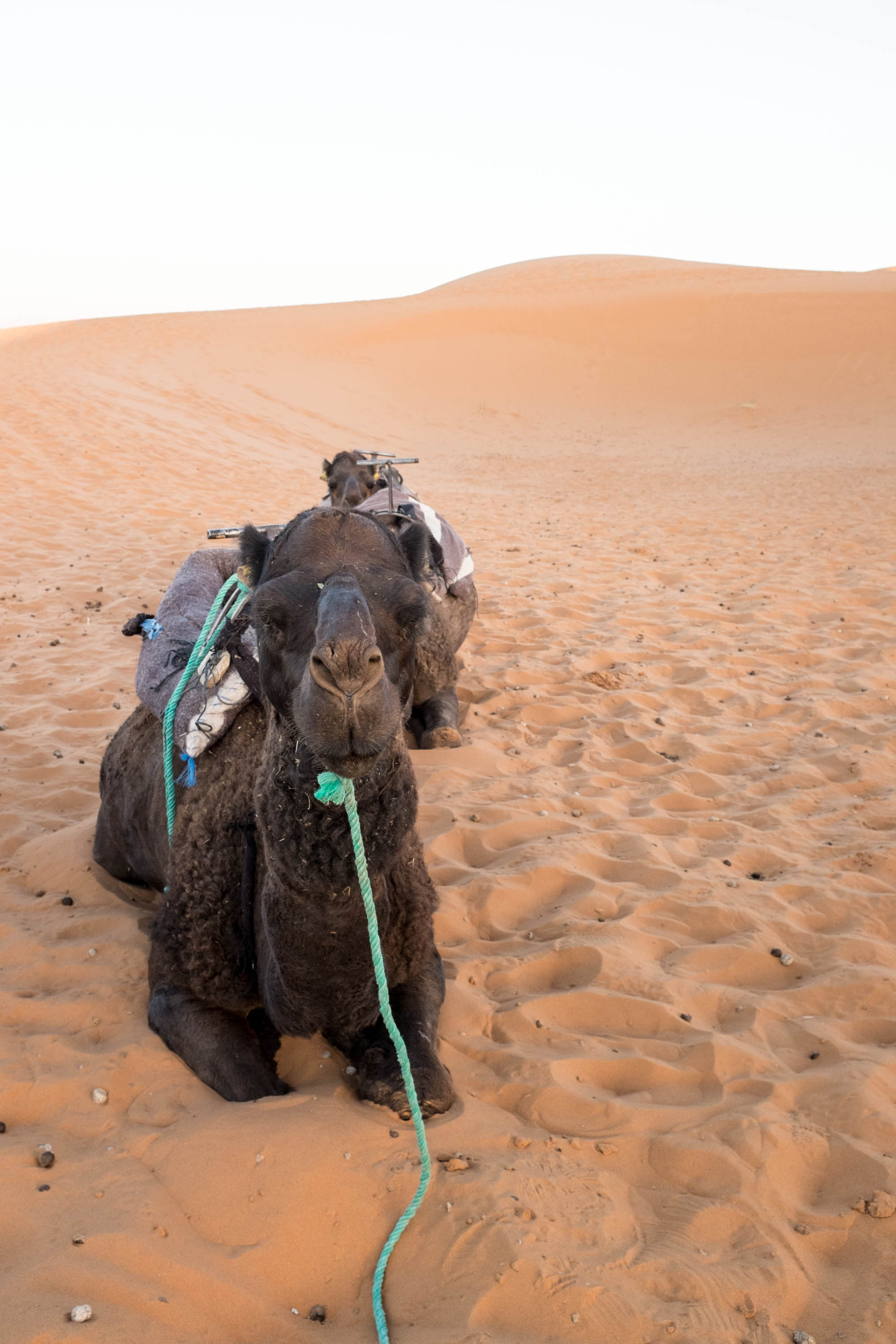
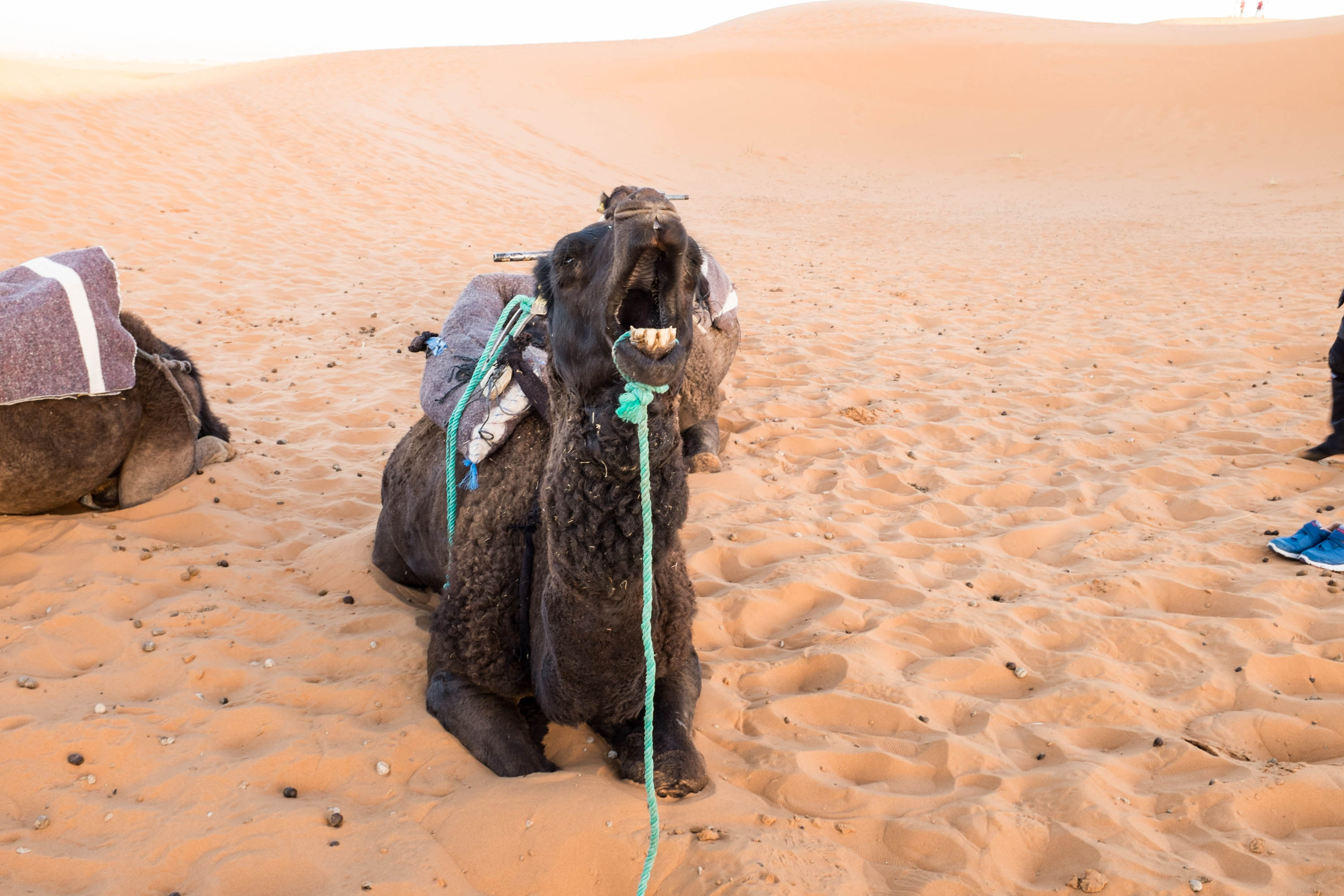
One by one we mount our dromedaries. They have a strange way of standing up– front legs first, back legs second. There’s a moment when their passenger is nearly parallel to the ground, holding on for dear life. I’m happy to report that none of us fell off in this process (but I may have seen another tourist come tumbling down as their dromedary tried to stand up).
It’s nearly sunset as we set off on our ride, and golden hour is upon us. The sand is full of stories: footprints from days of dromedary journeys, waves from the breeze that has carried small portions in soft patterns. As we reach our dune of choice, our dromedaries sit down and we hike to the top. There’s something quite futile about climbing the sand dunes: one step forward, two steps back.
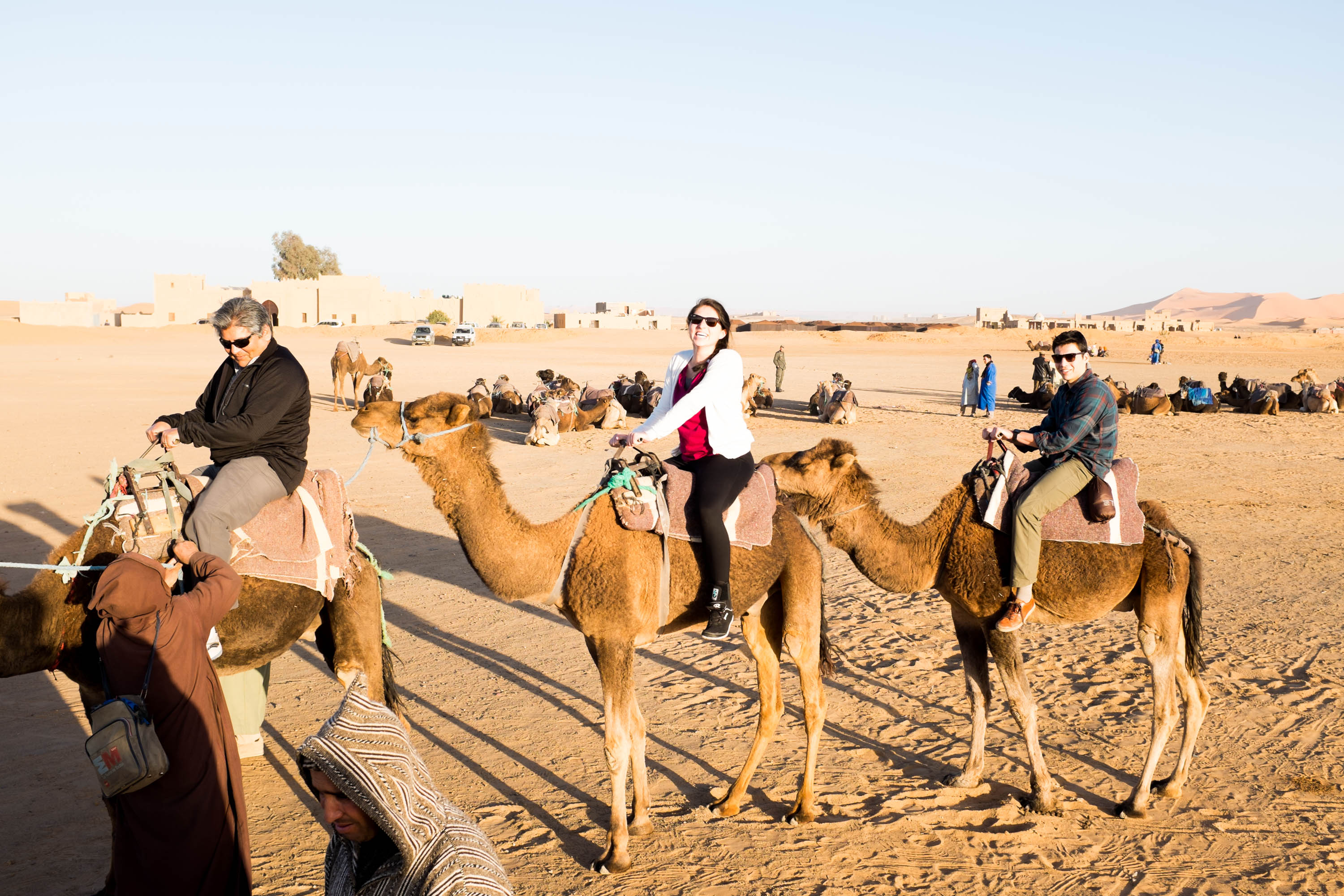
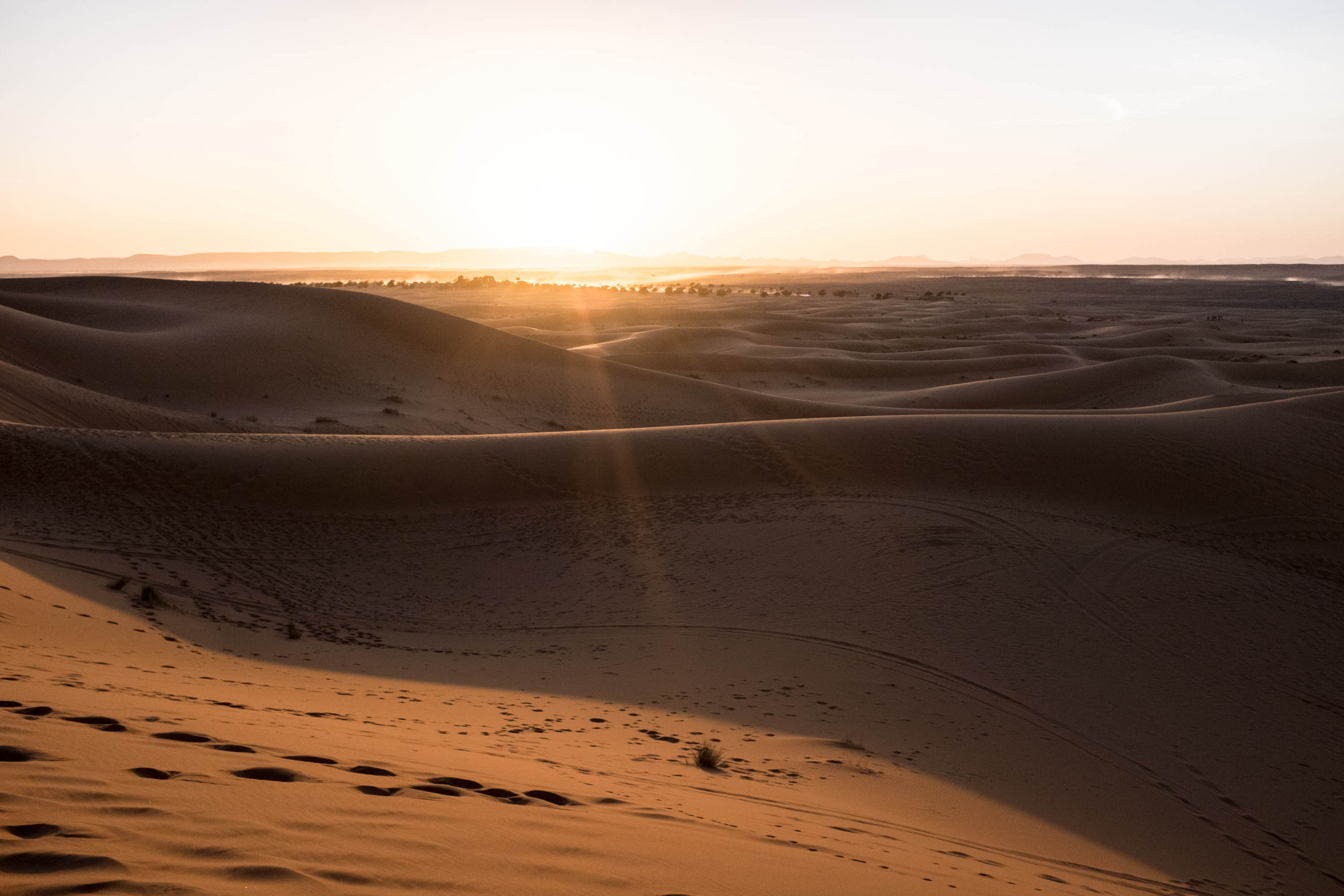
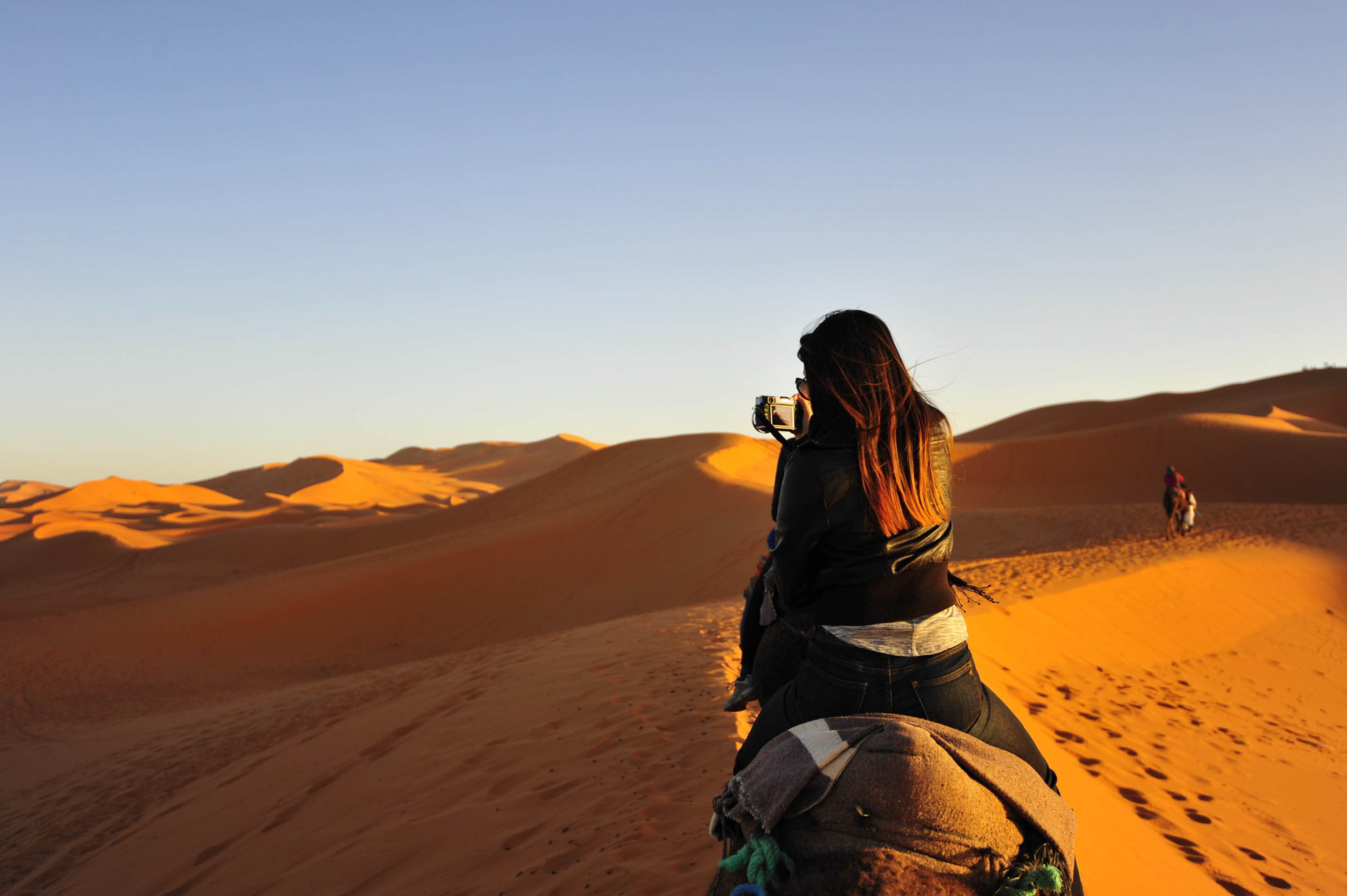
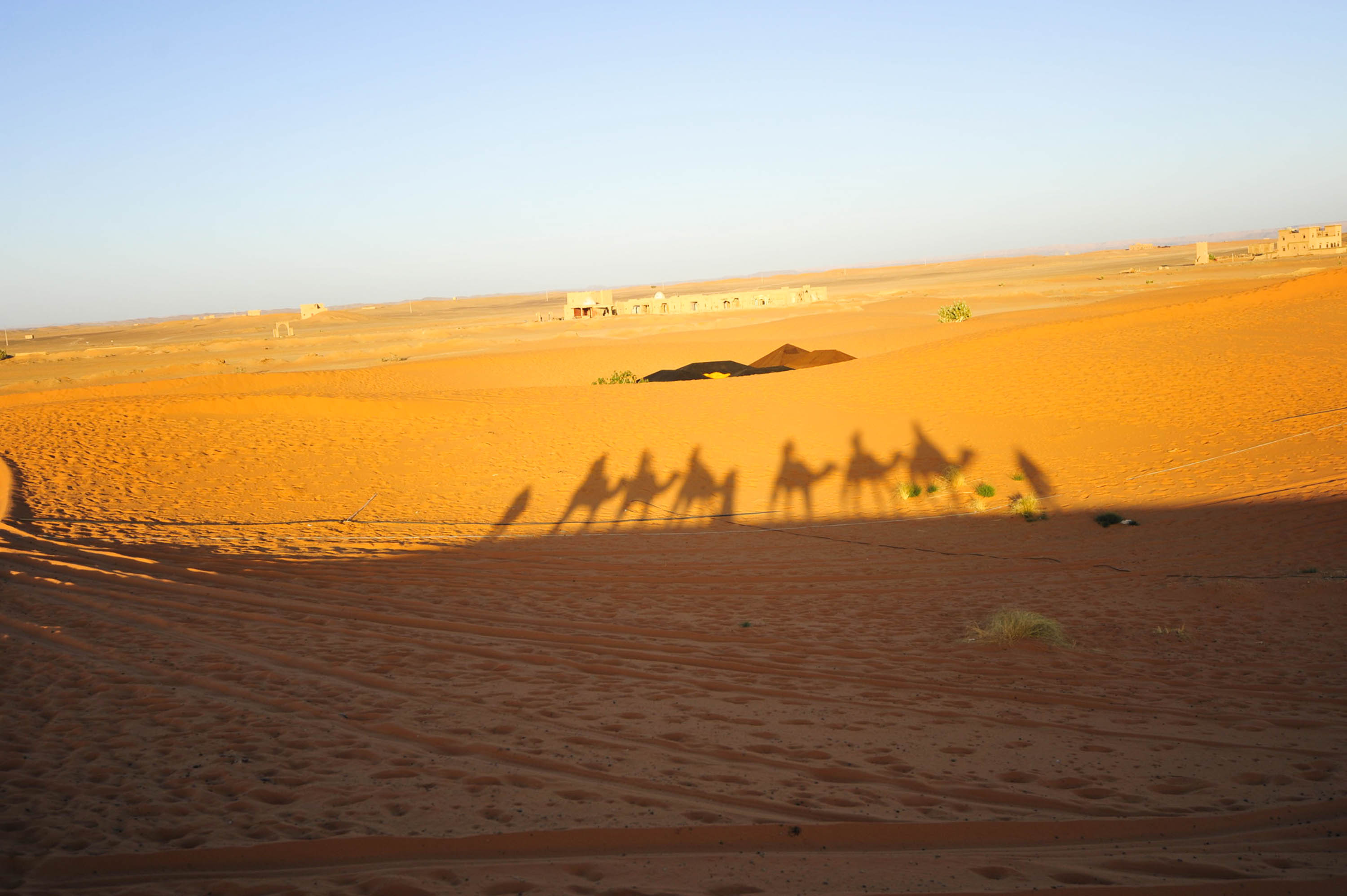
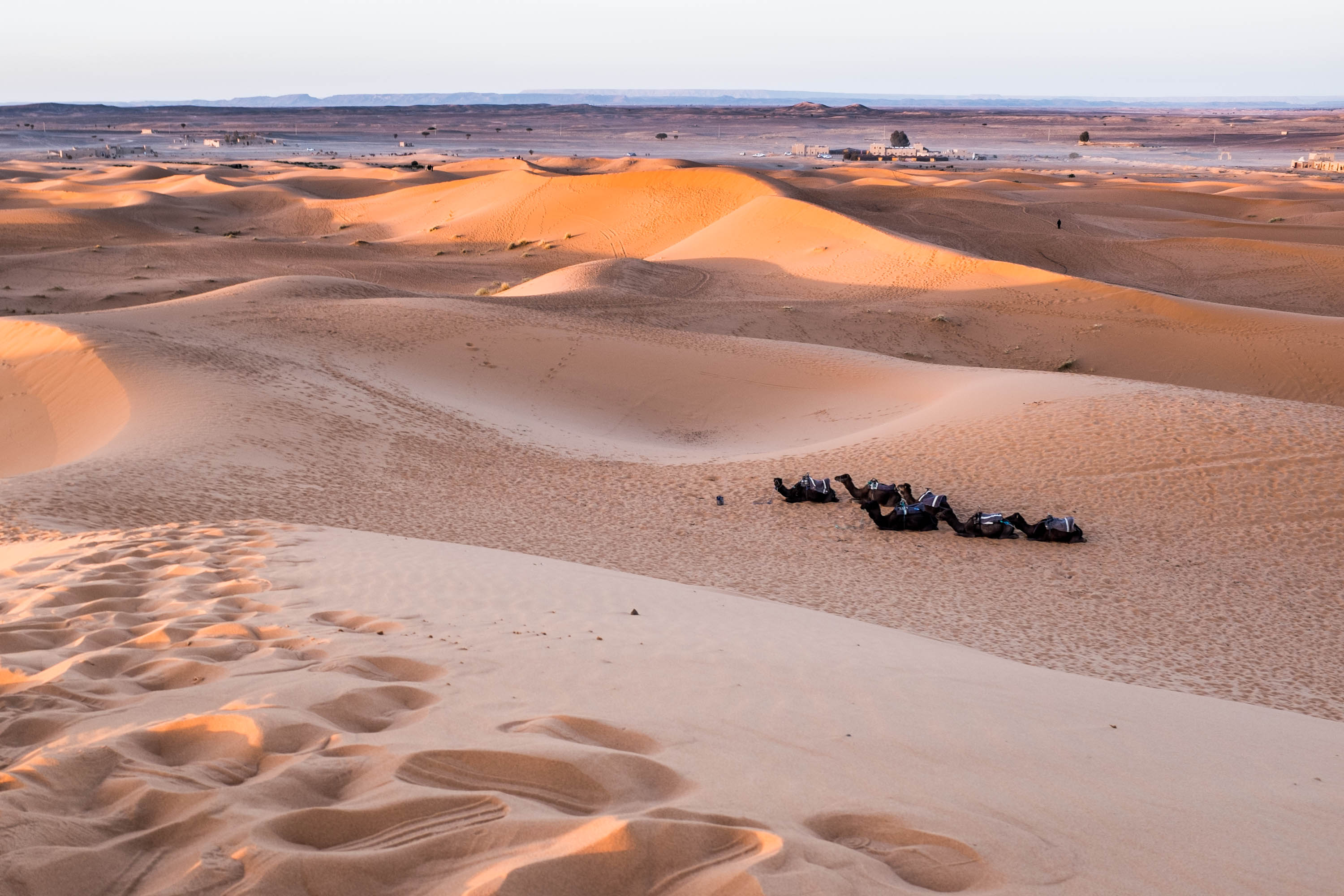
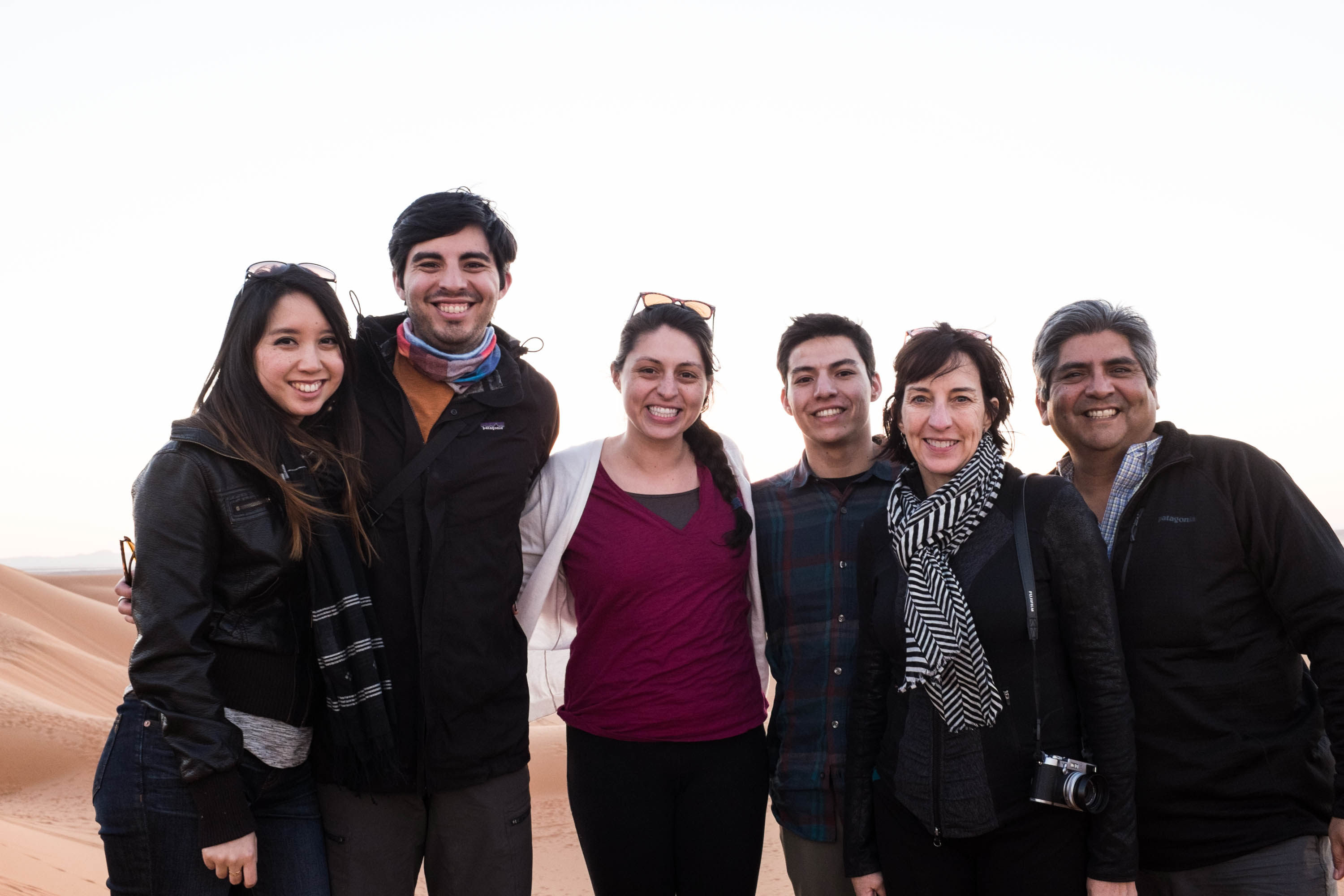
The breeze is soft and that’s a good thing because sandstorms are an unfortunate reality. As Aaron and I rapidly take snapshots of the sinking sun, the rest of our family seems to drink in the moment. Our dunes guide smiles as the light begins to fade. His face has been carved with sand and Saharan sunshine, but it becomes him. I can only imagine what faces and souls have crossed this desert on the backs of dromedaries in centuries past. At some point, the landscape must look the same in every direction– maddening, certainly, except maybe for the stars.
We spent the night at a camp in the dunes. It became so cold that I would not recommend it to anyone, but it did allow us to go back out for sunrise. The highlight was getting to slide down the dunes in a sled fashioned from a thick blanket. Before we left, I filled an empty water bottle with sand from the dunes. There’s a lifetime supply in the Sahara and the handful I gathered won’t be missed, but I will miss it: the waves, the quietness, the laughter, the sand-worn faces.
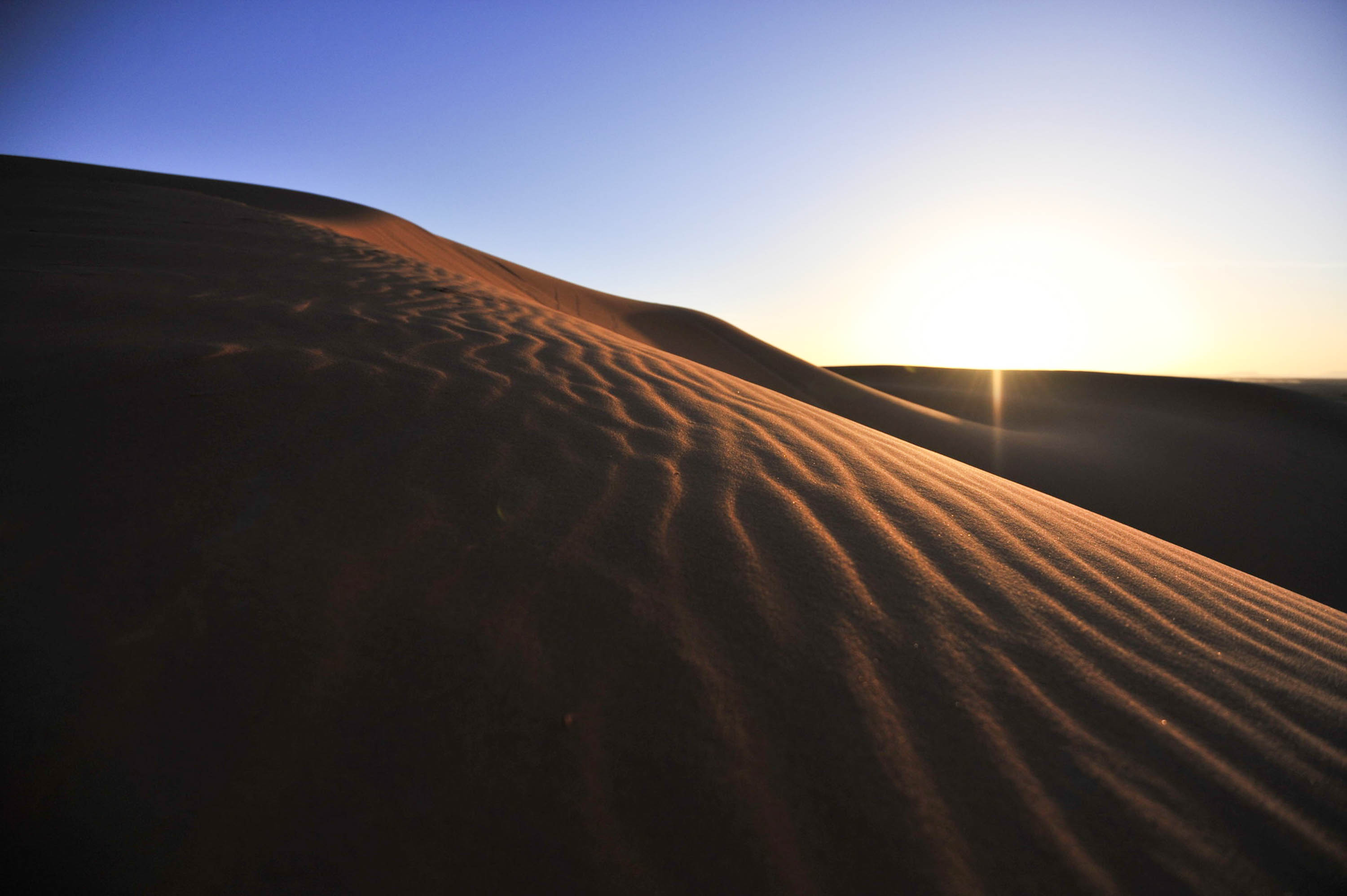
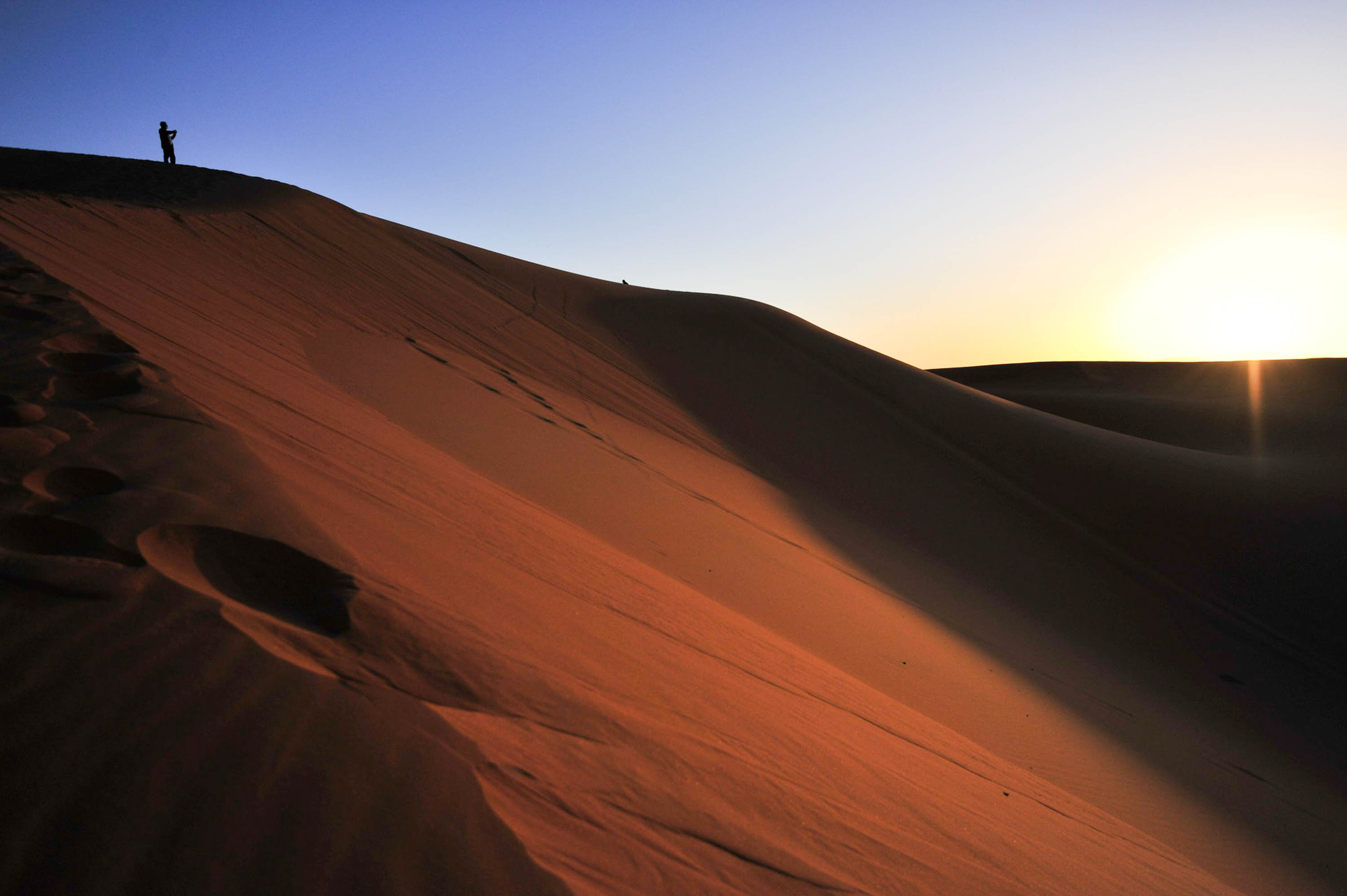
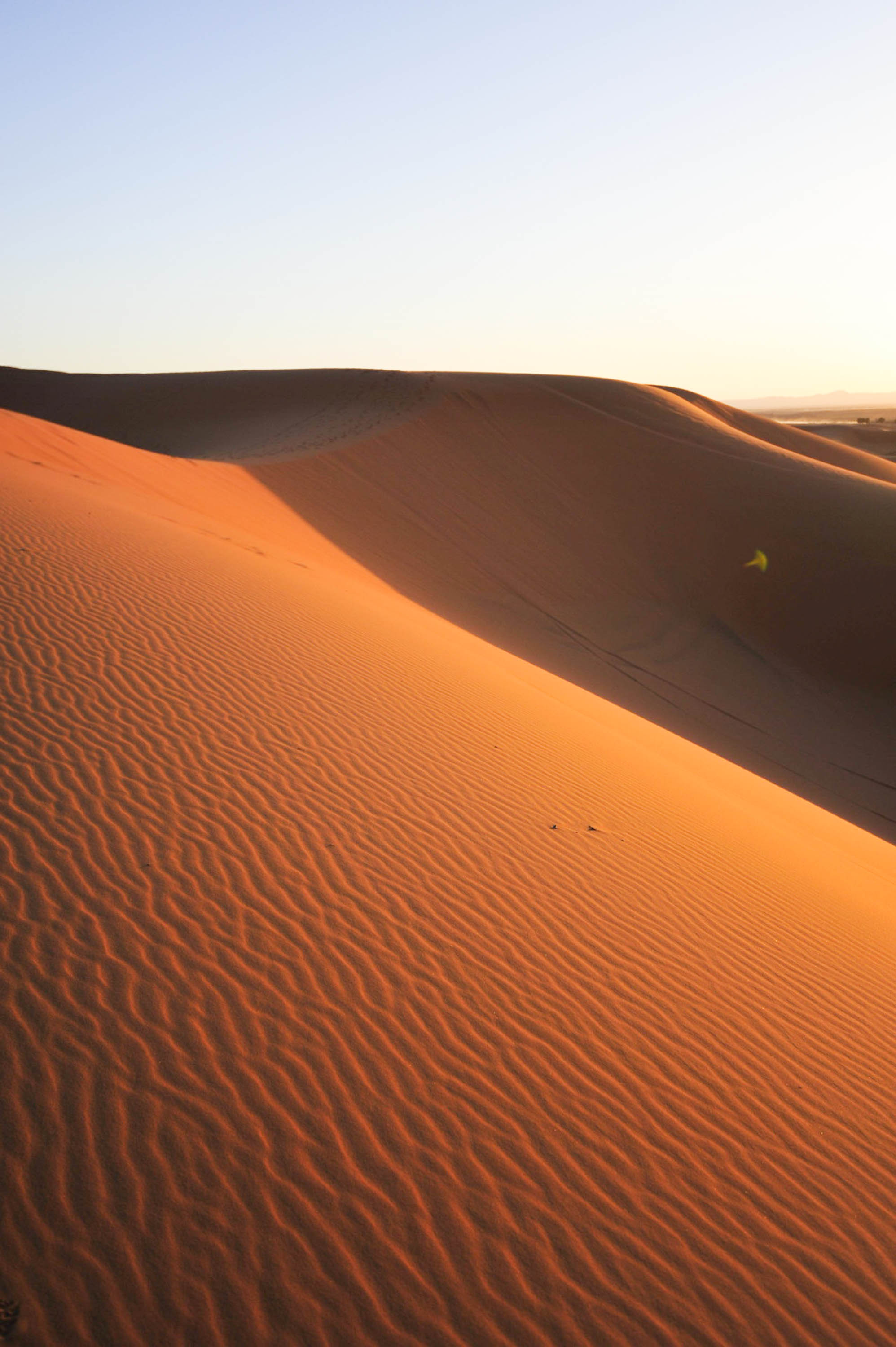
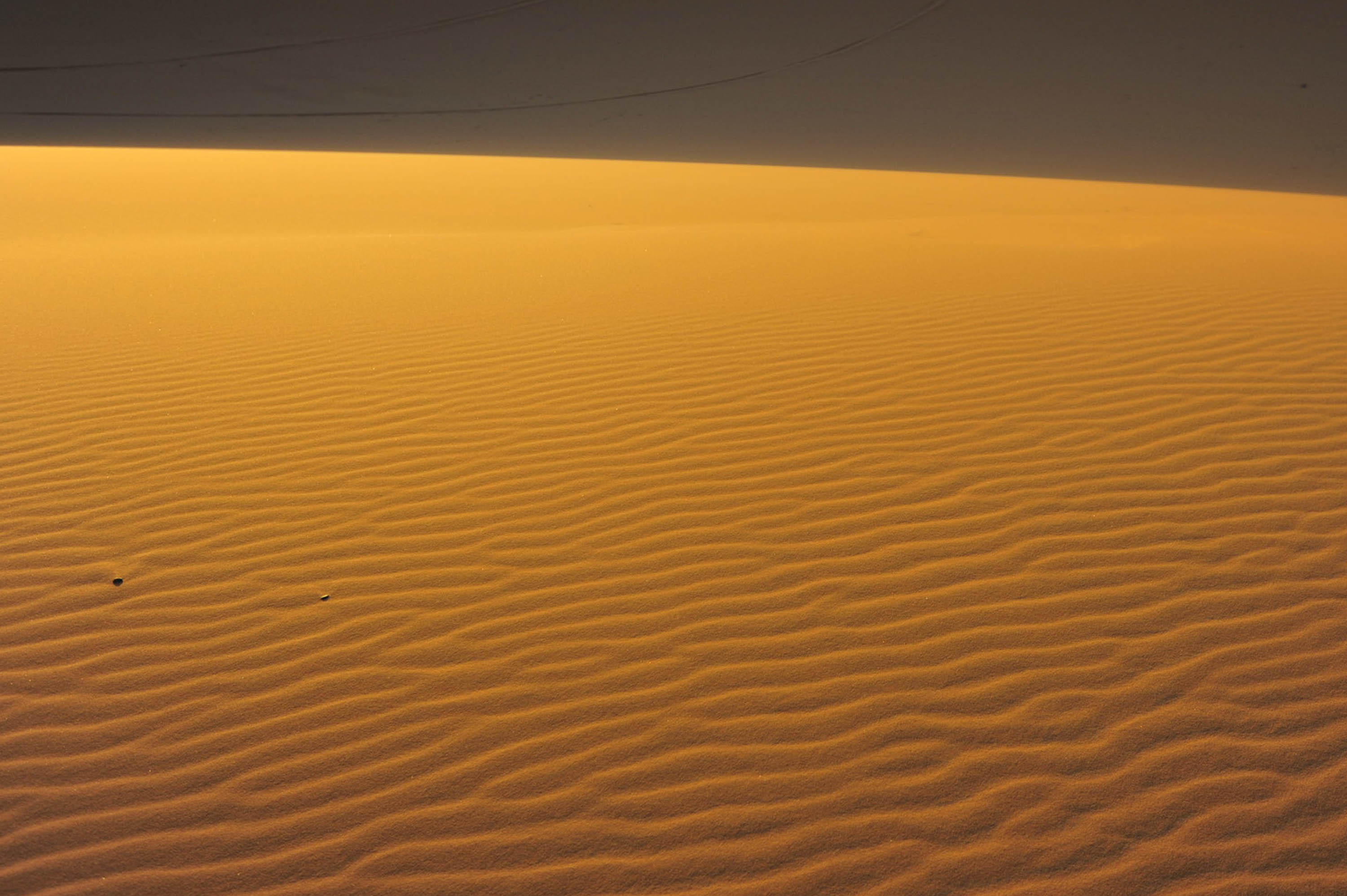
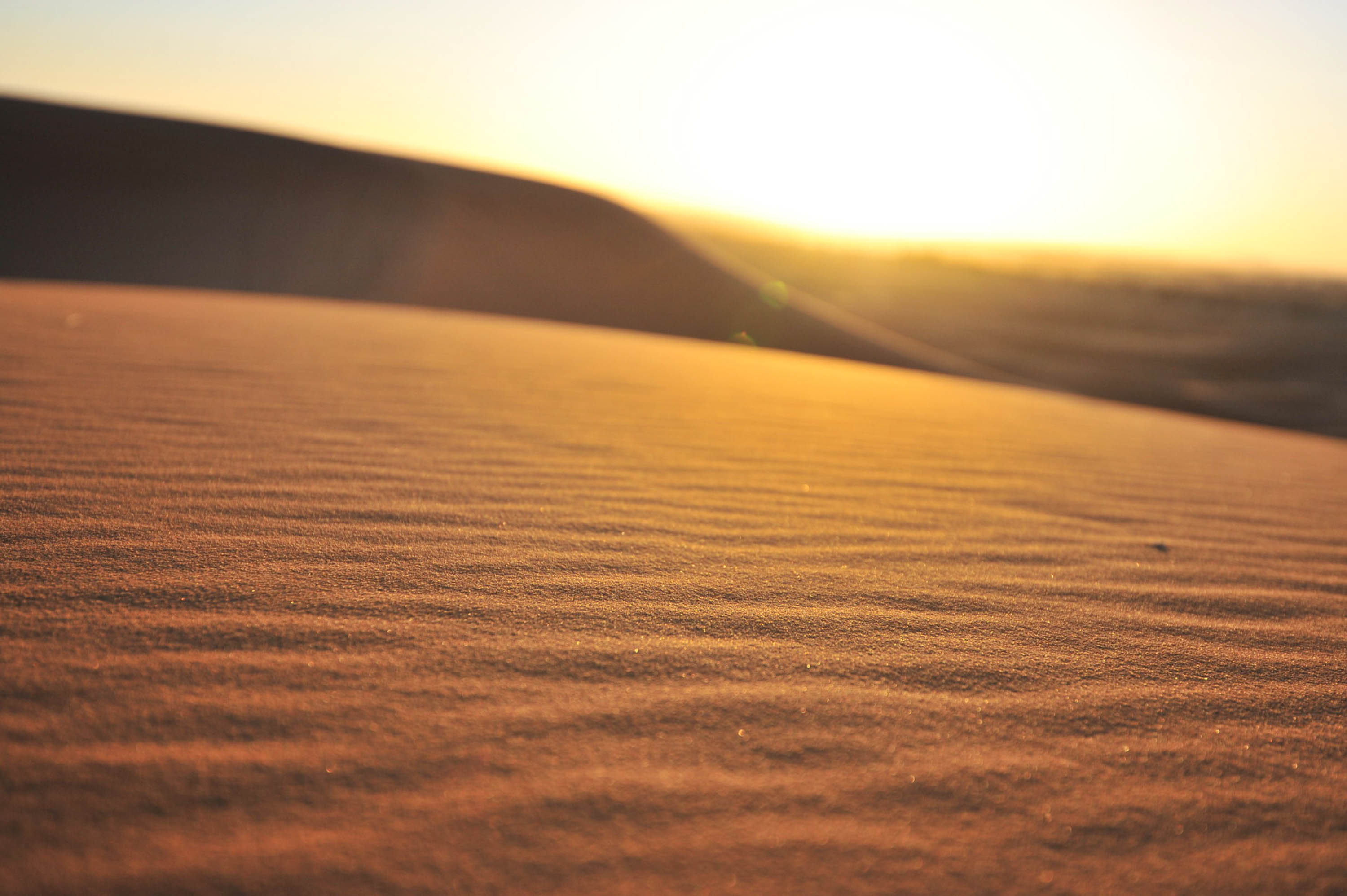
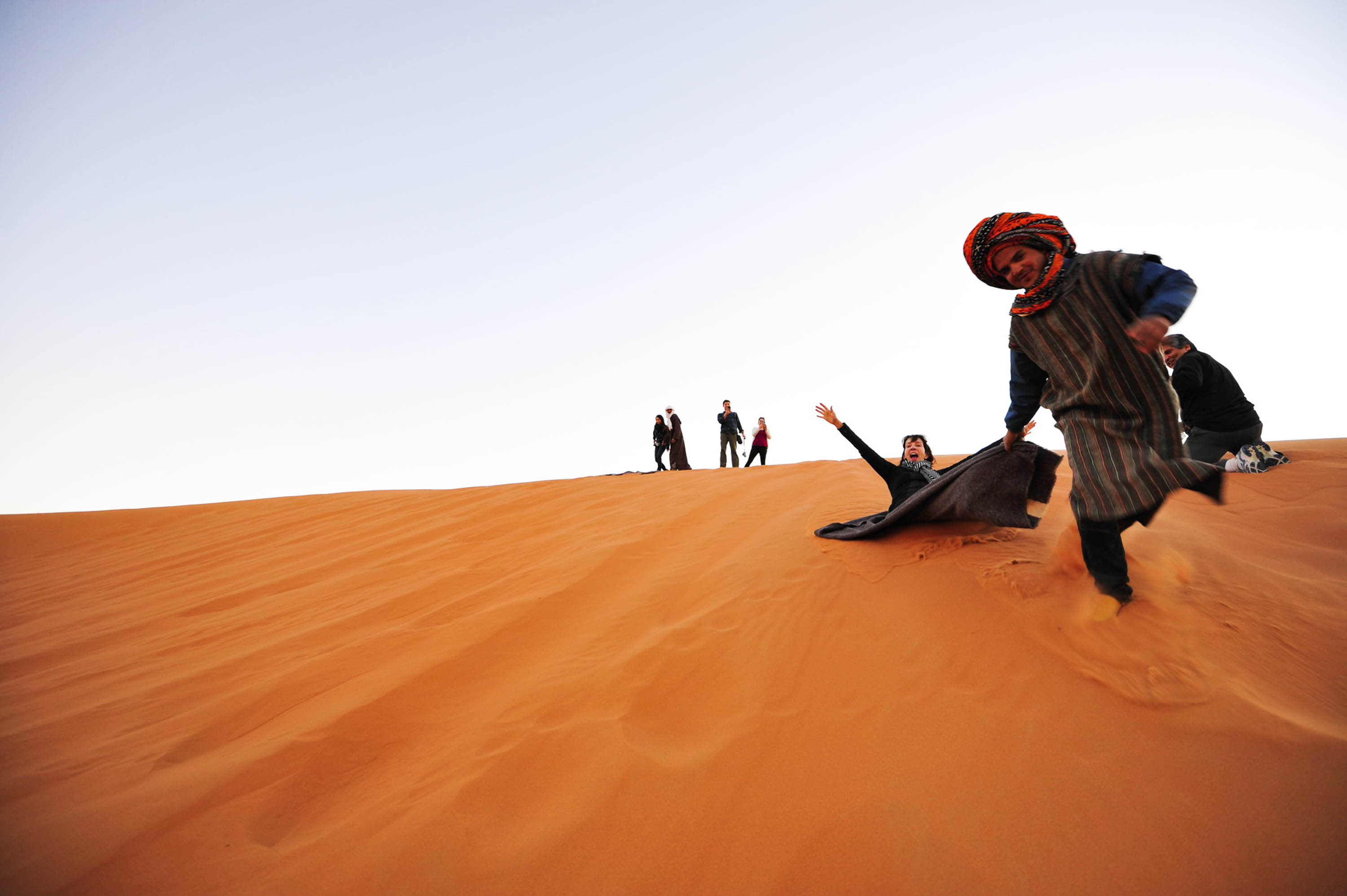

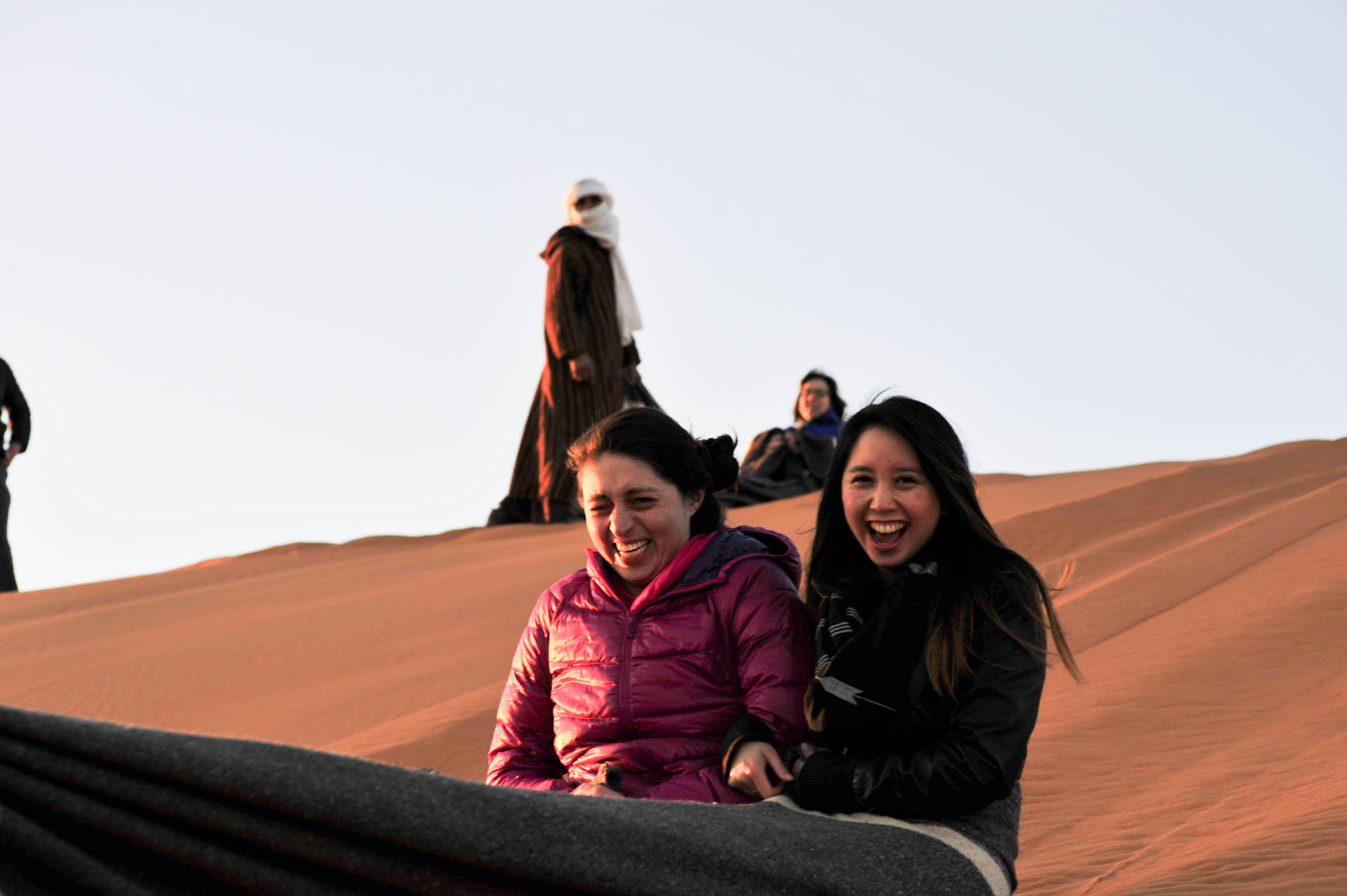
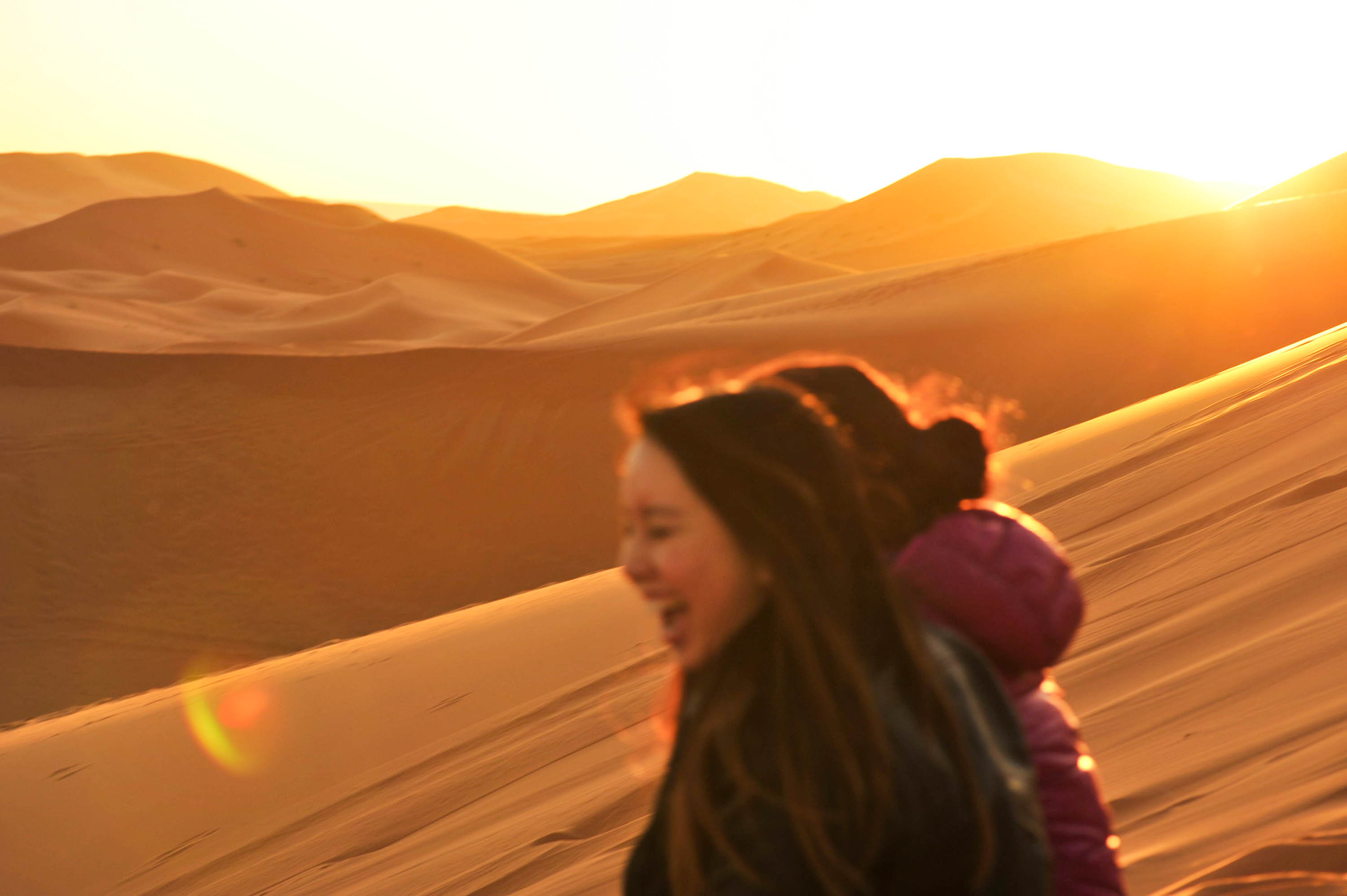
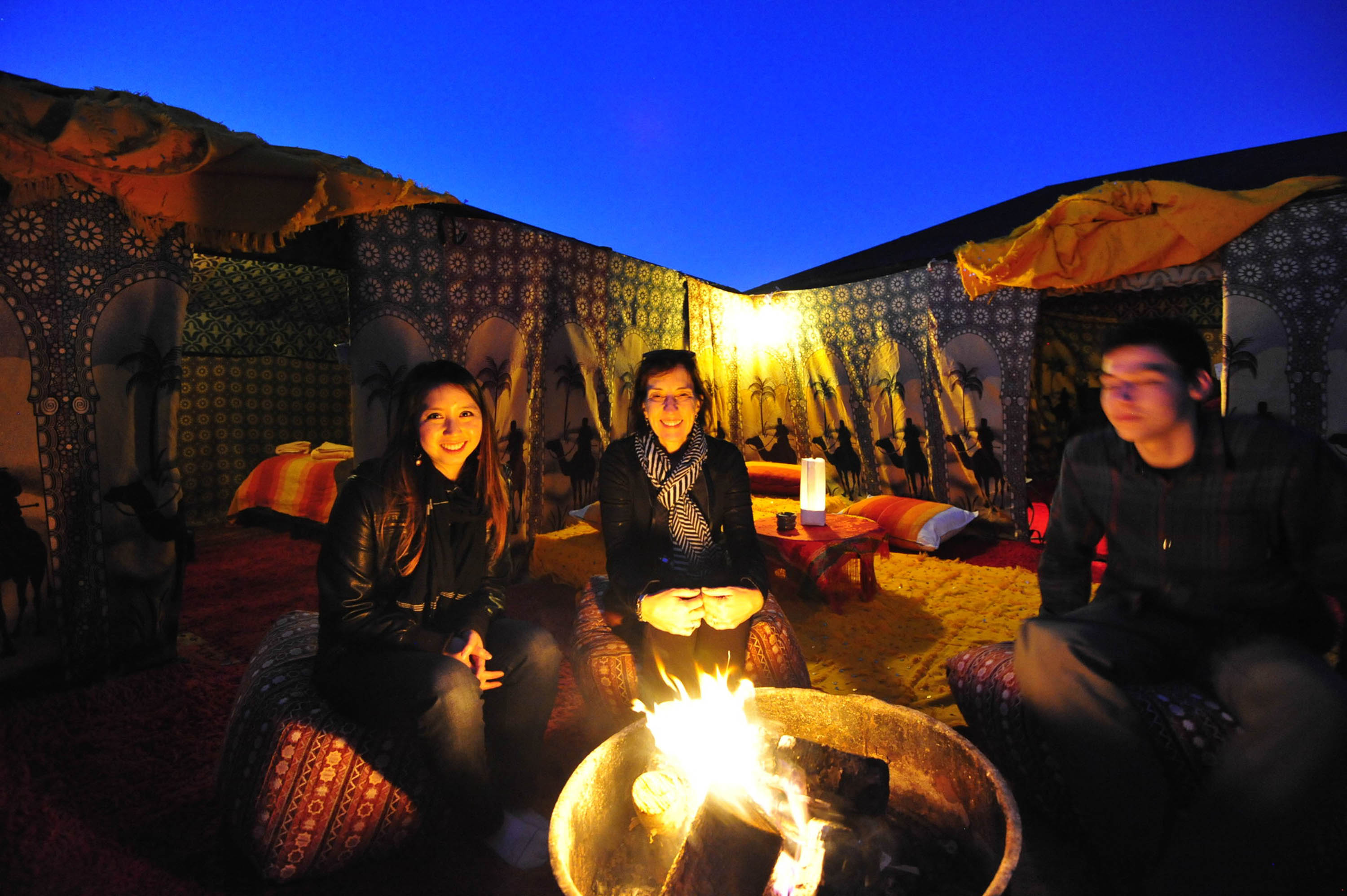
Gorges, kasbahs, and mountain roads
We proceeded back towards the Atlas Mountains, crossing through Dades Gorge. The red sand reminded me of our jaunt to Utah last spring, but of course this was also completely different. Oases are valleys where there is groundwater– enough for a small forest to thrive. Kasbahs, or castles, were built in these oases– and many of them remain in ruins today.
On the way to the gorge is a horrific road with too many hairpin turns to count. It is well-paved, but there’s no guarantee that someone going the opposite direction won’t collide into our van head-on. But, since we survived, we can boast of our so-called courage and share photographs.
The gorge is quiet and cool. I’ve developed a tender place in my heart for valleys. So often we chase mountaintop vistas– whether literal or metaphorical– and we forget that the valley is where the river runs, and that’s where the most life is.
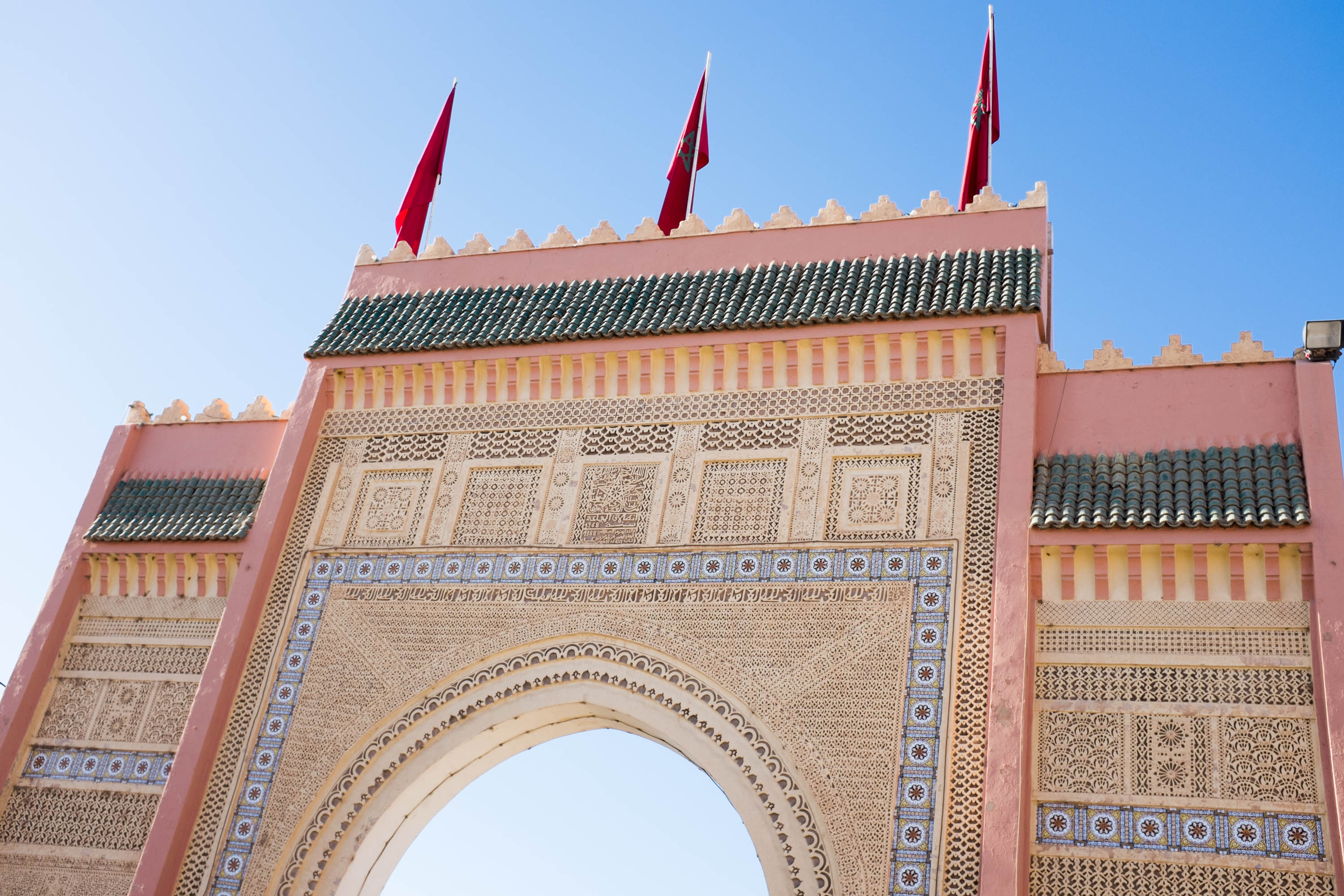
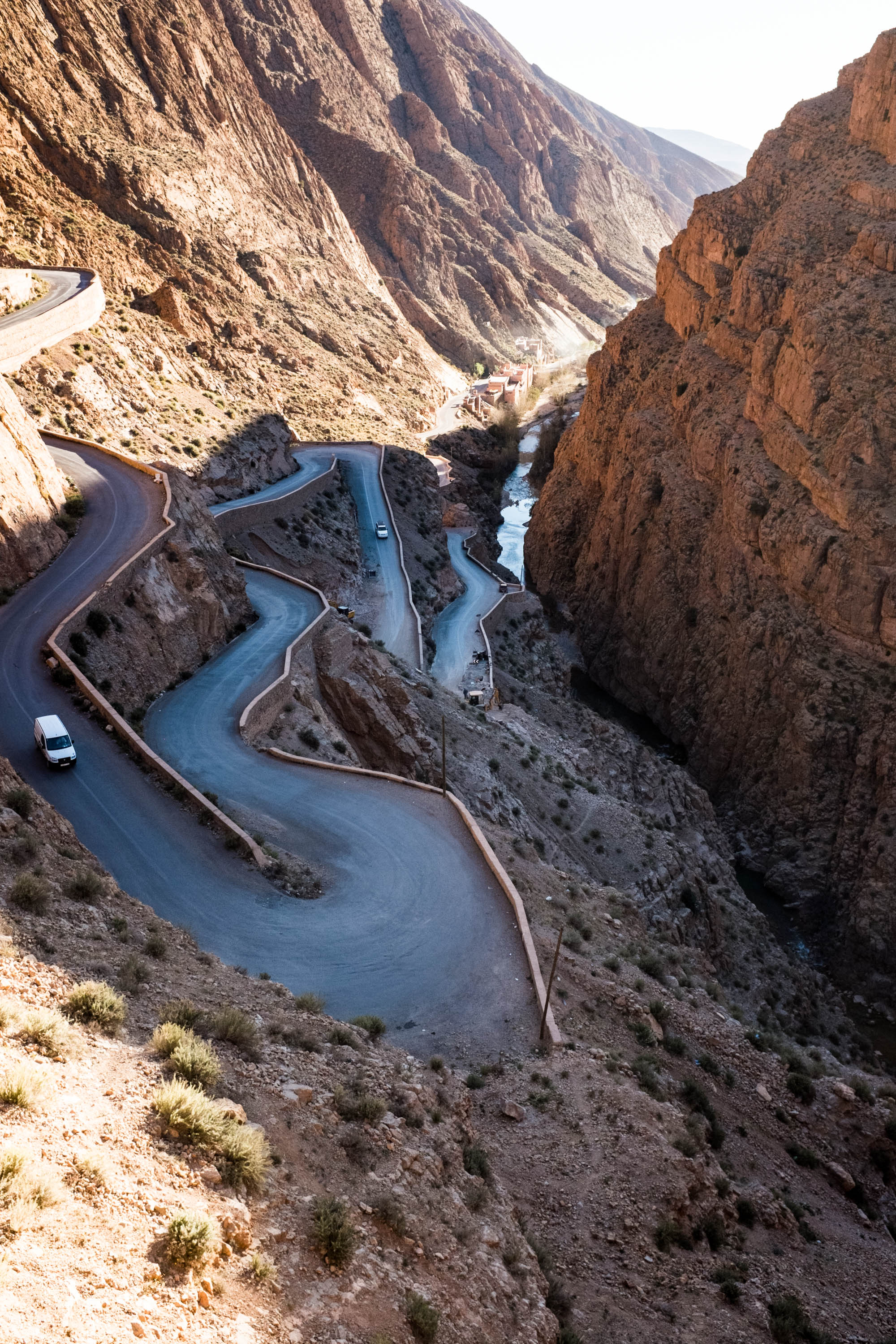
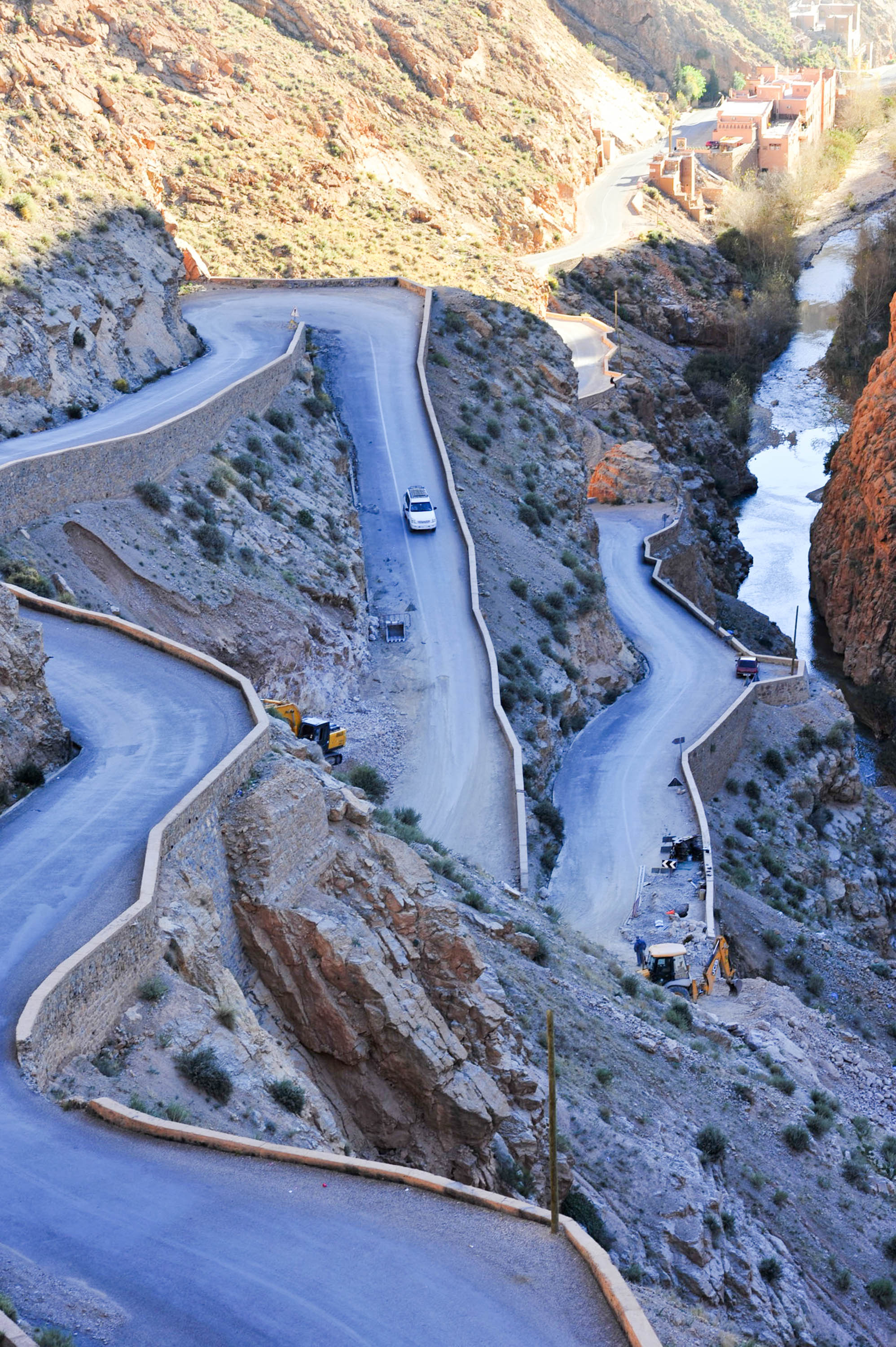
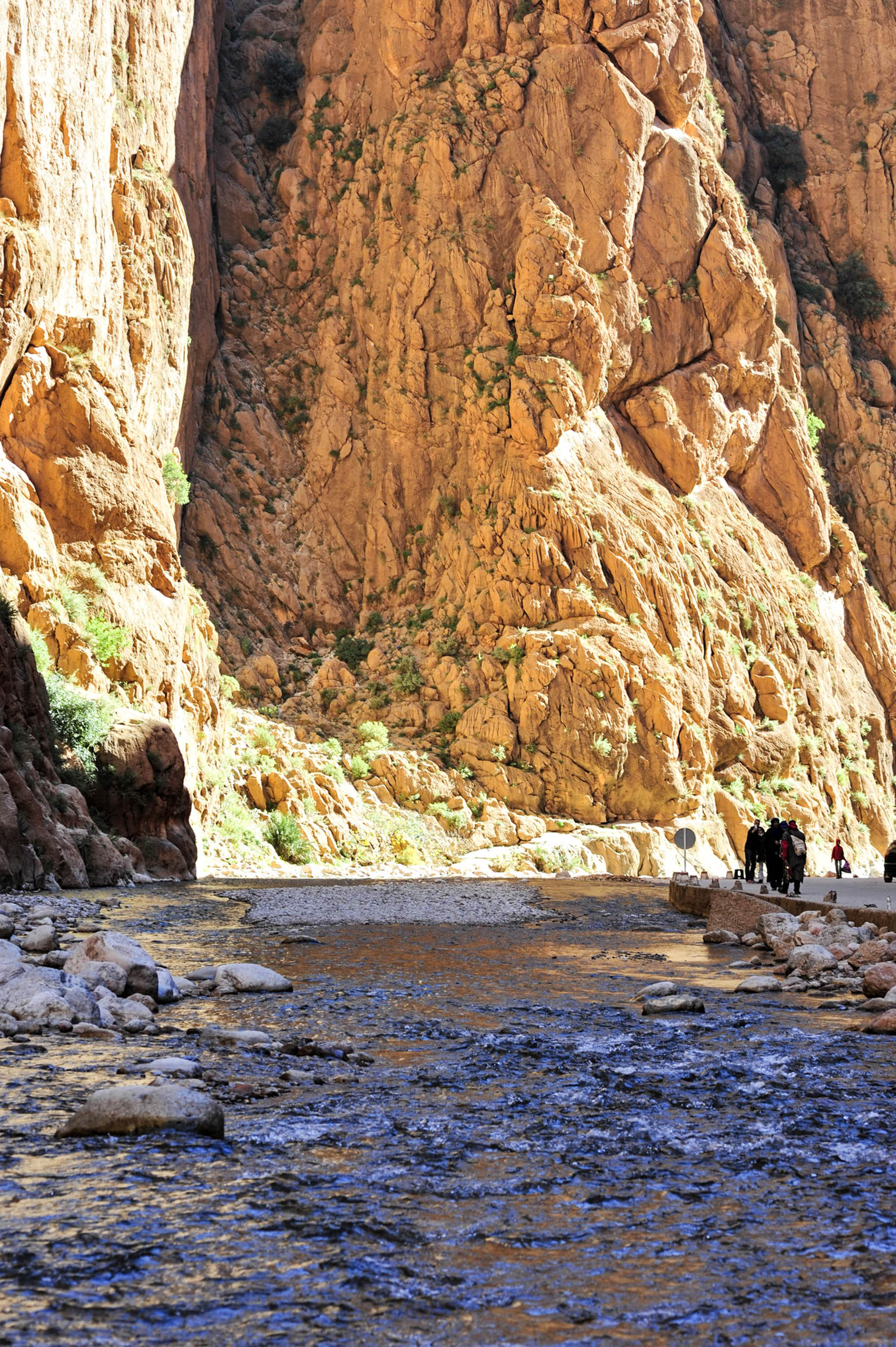
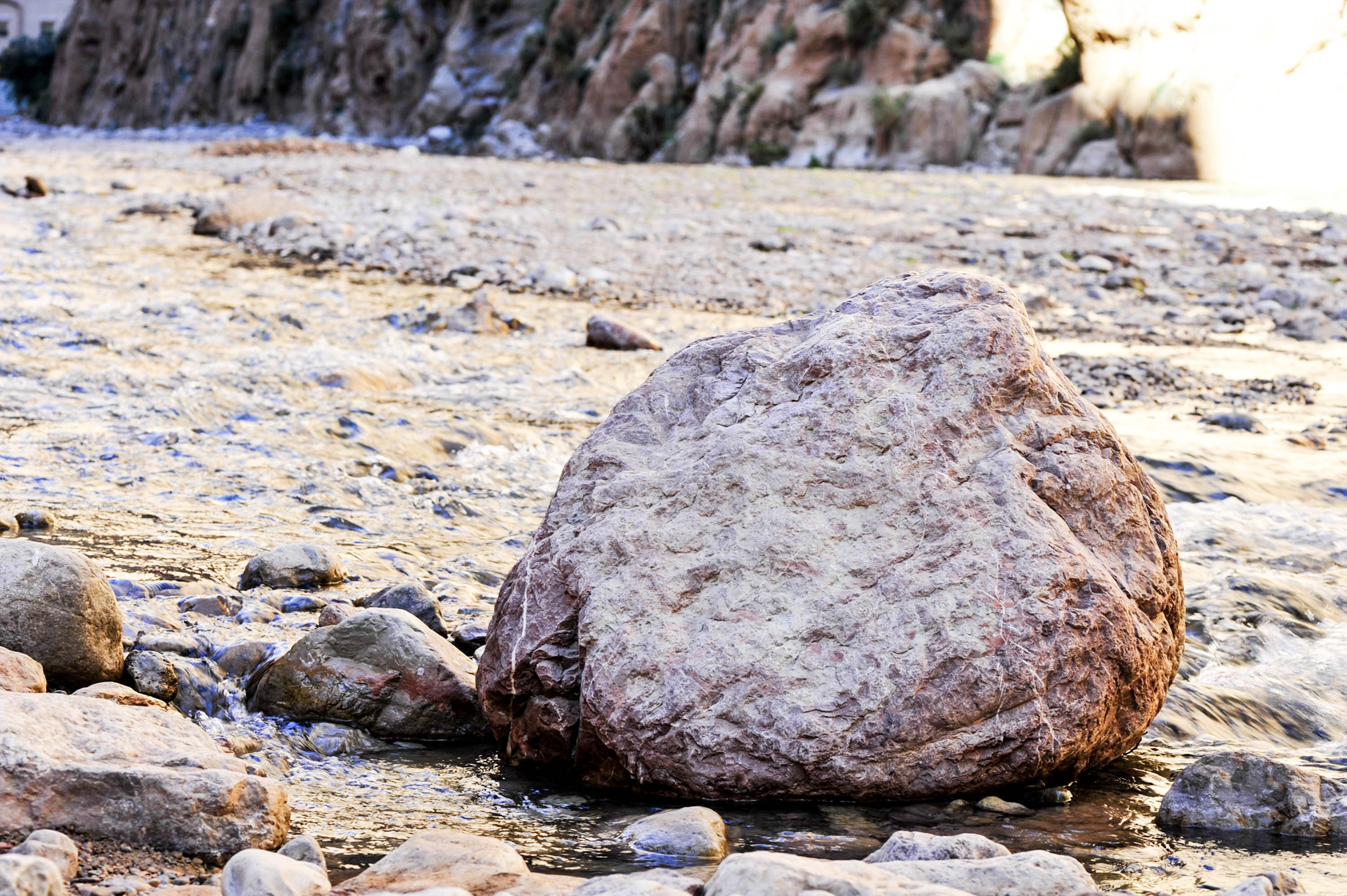
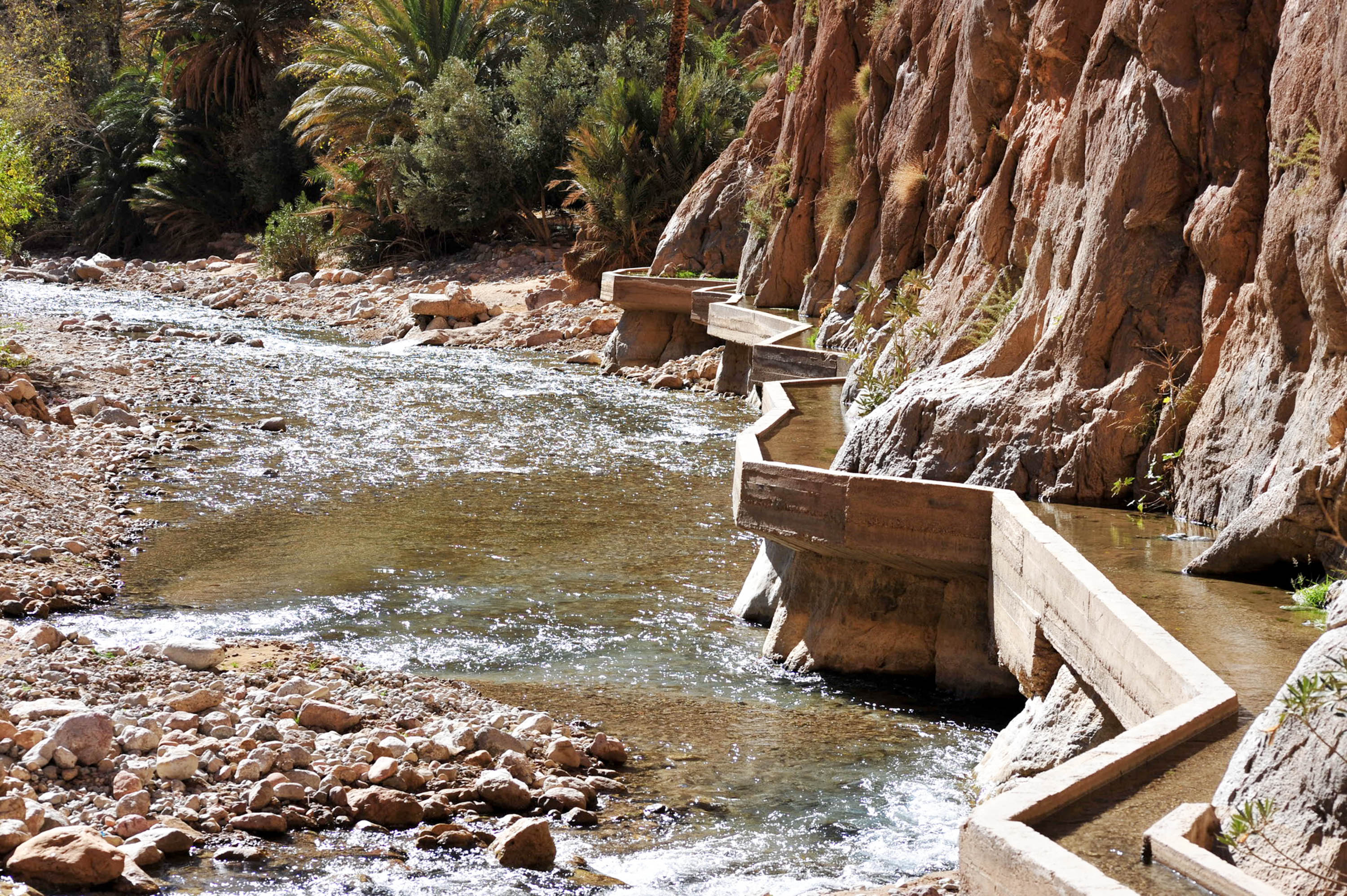
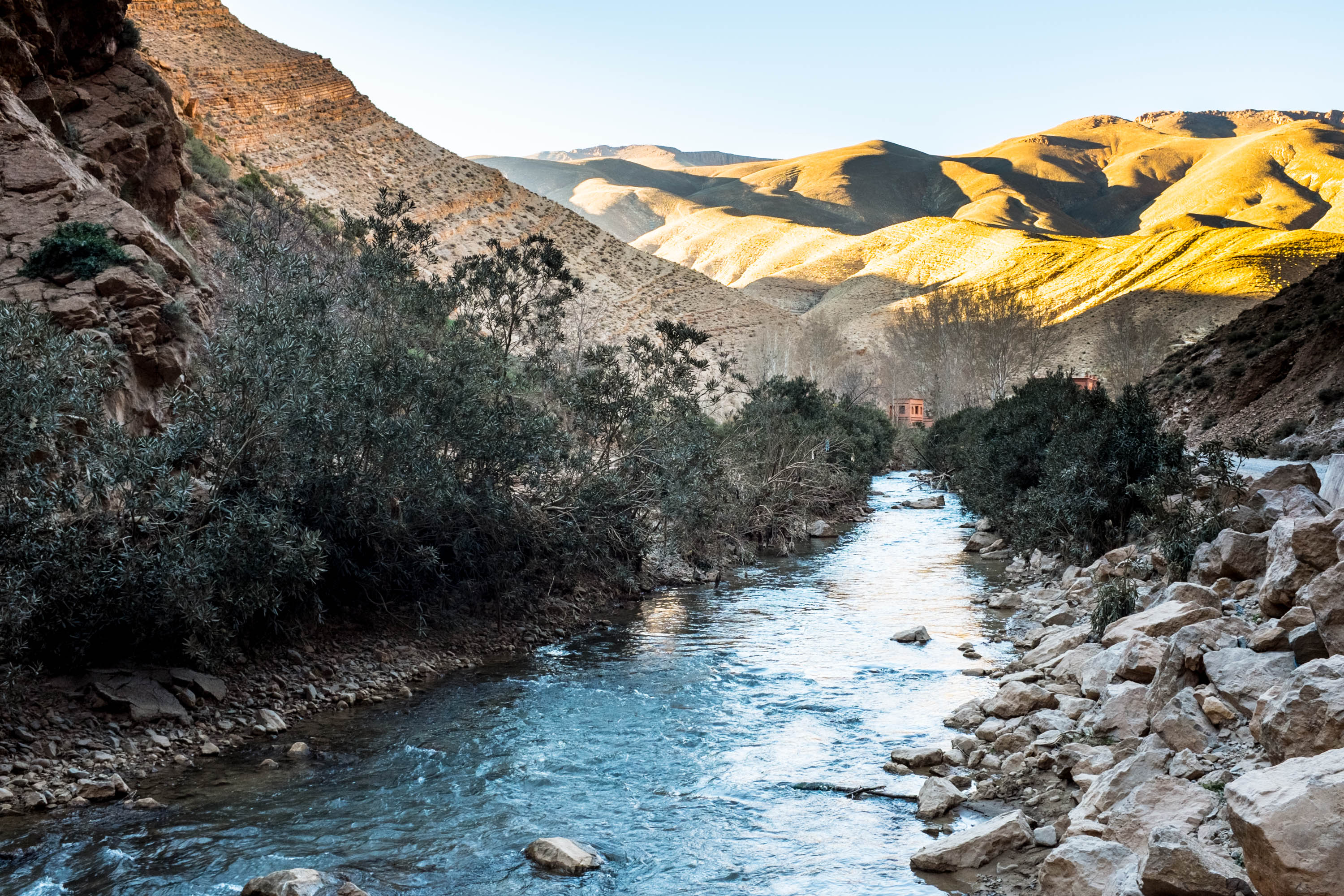
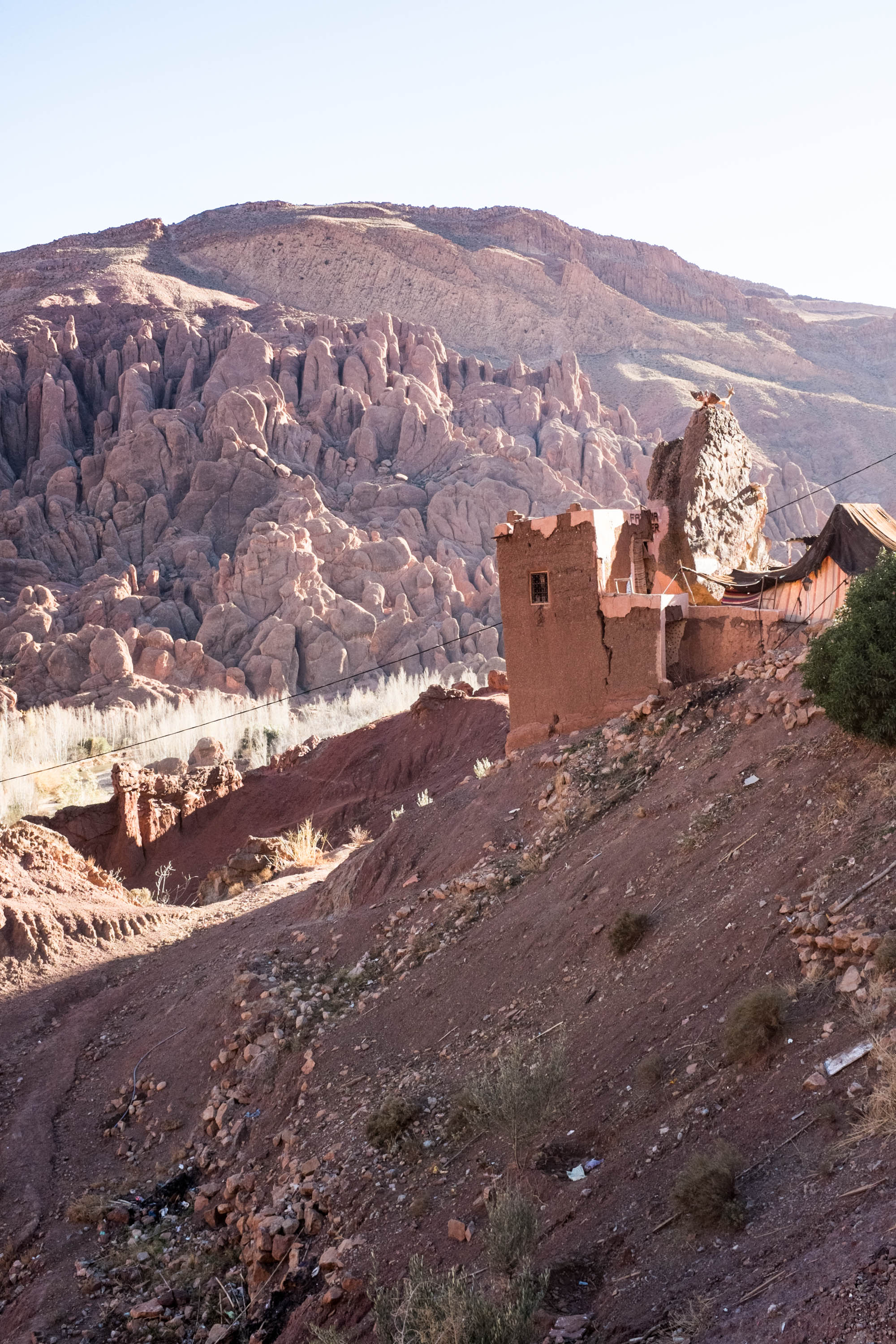
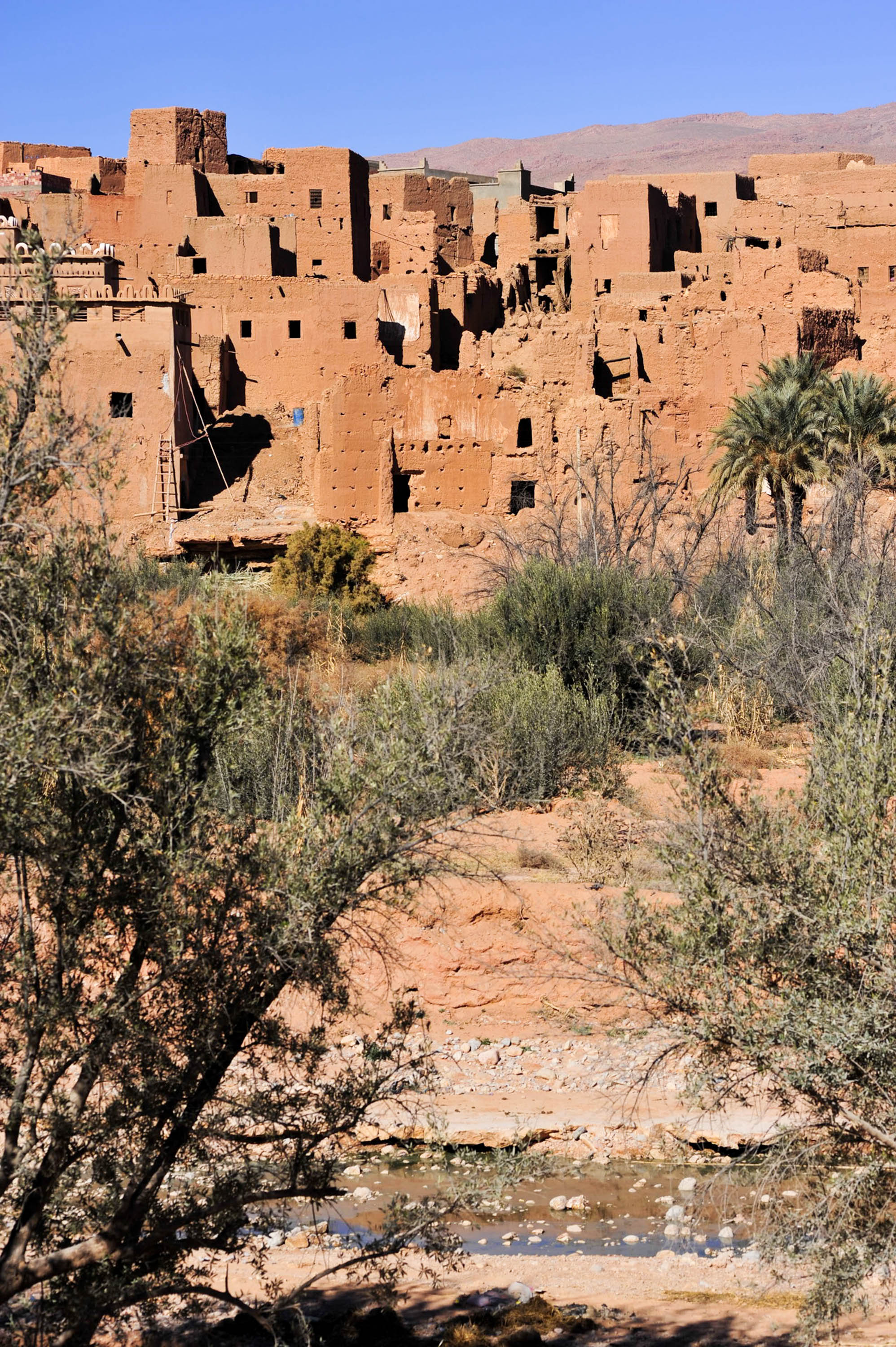
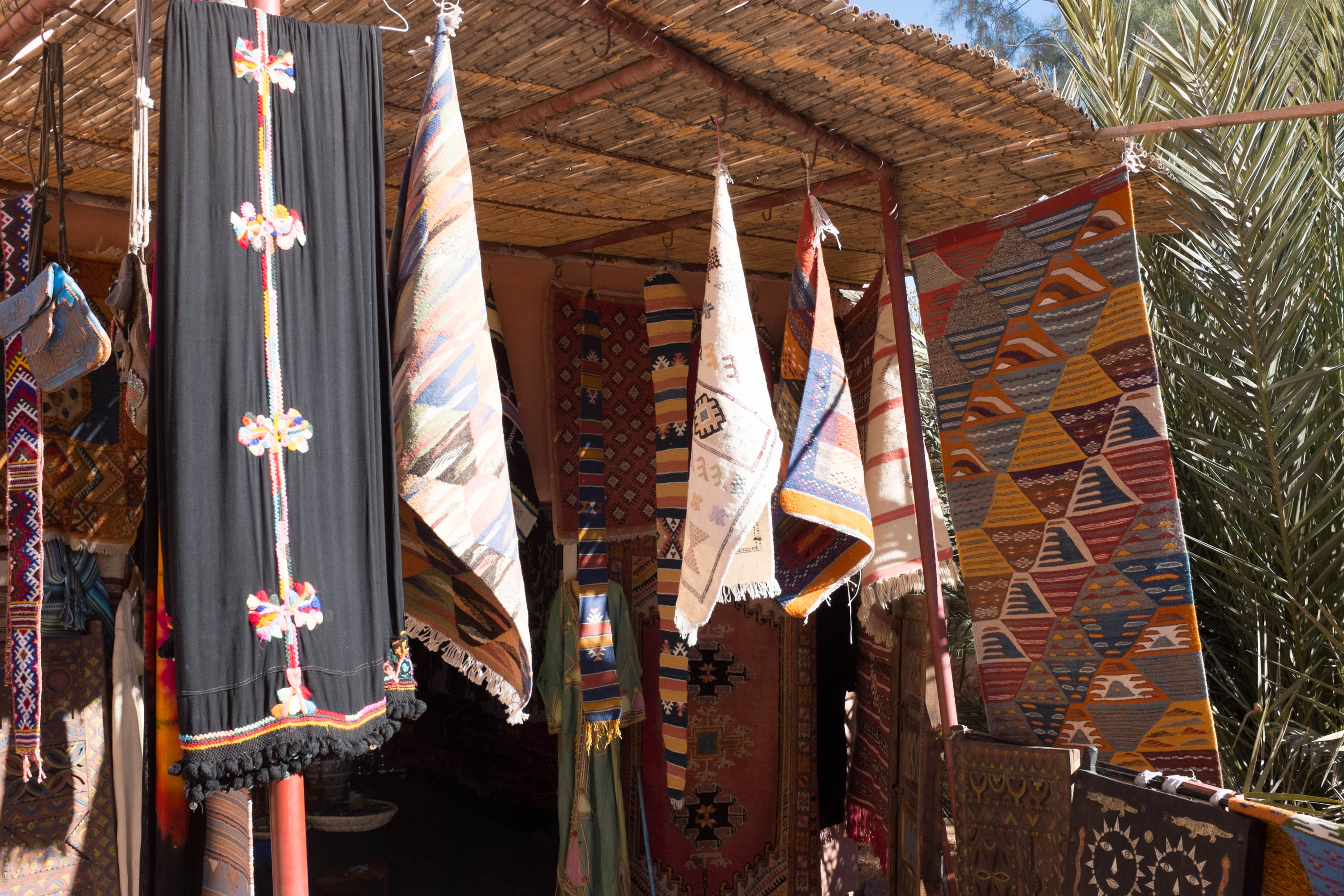
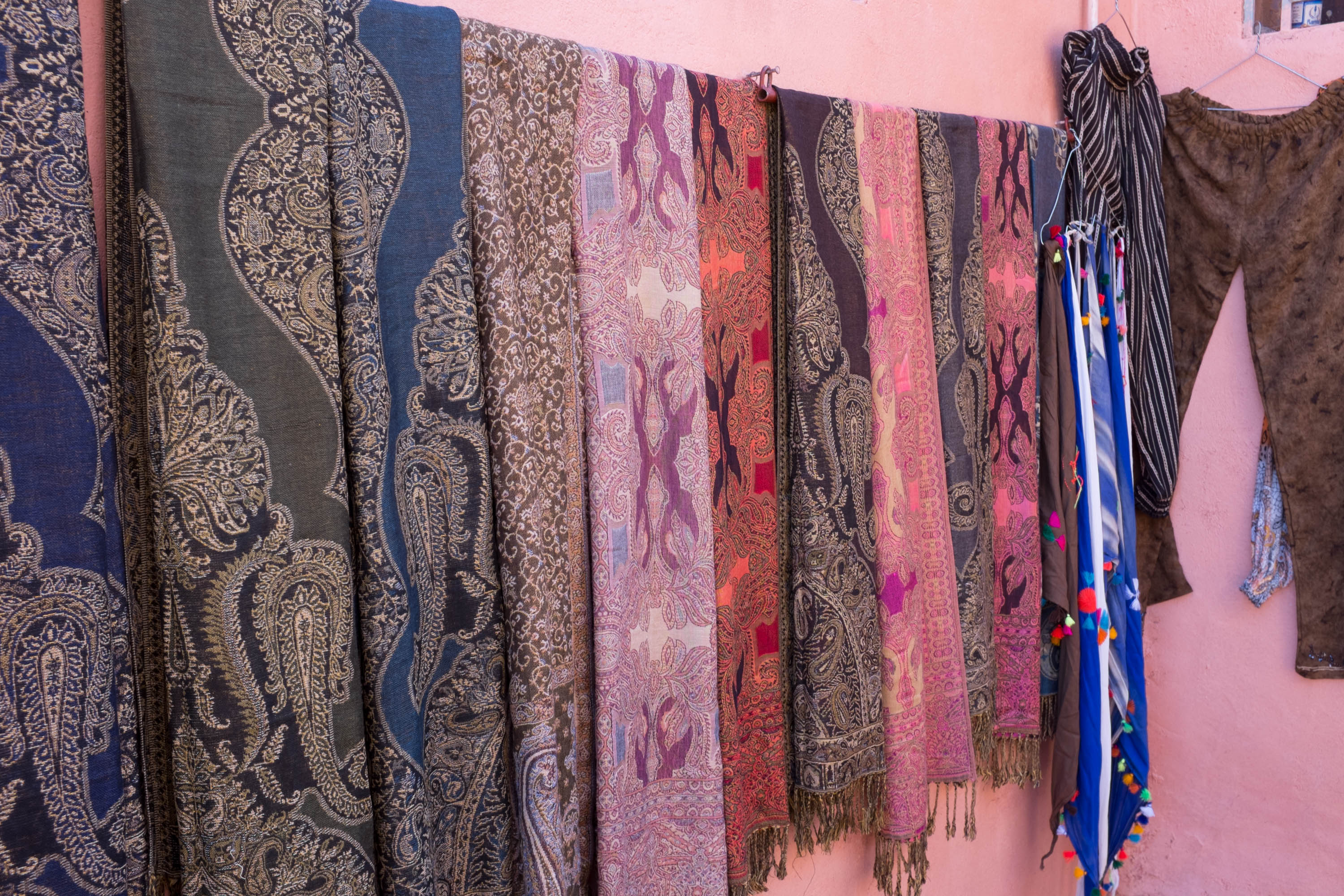
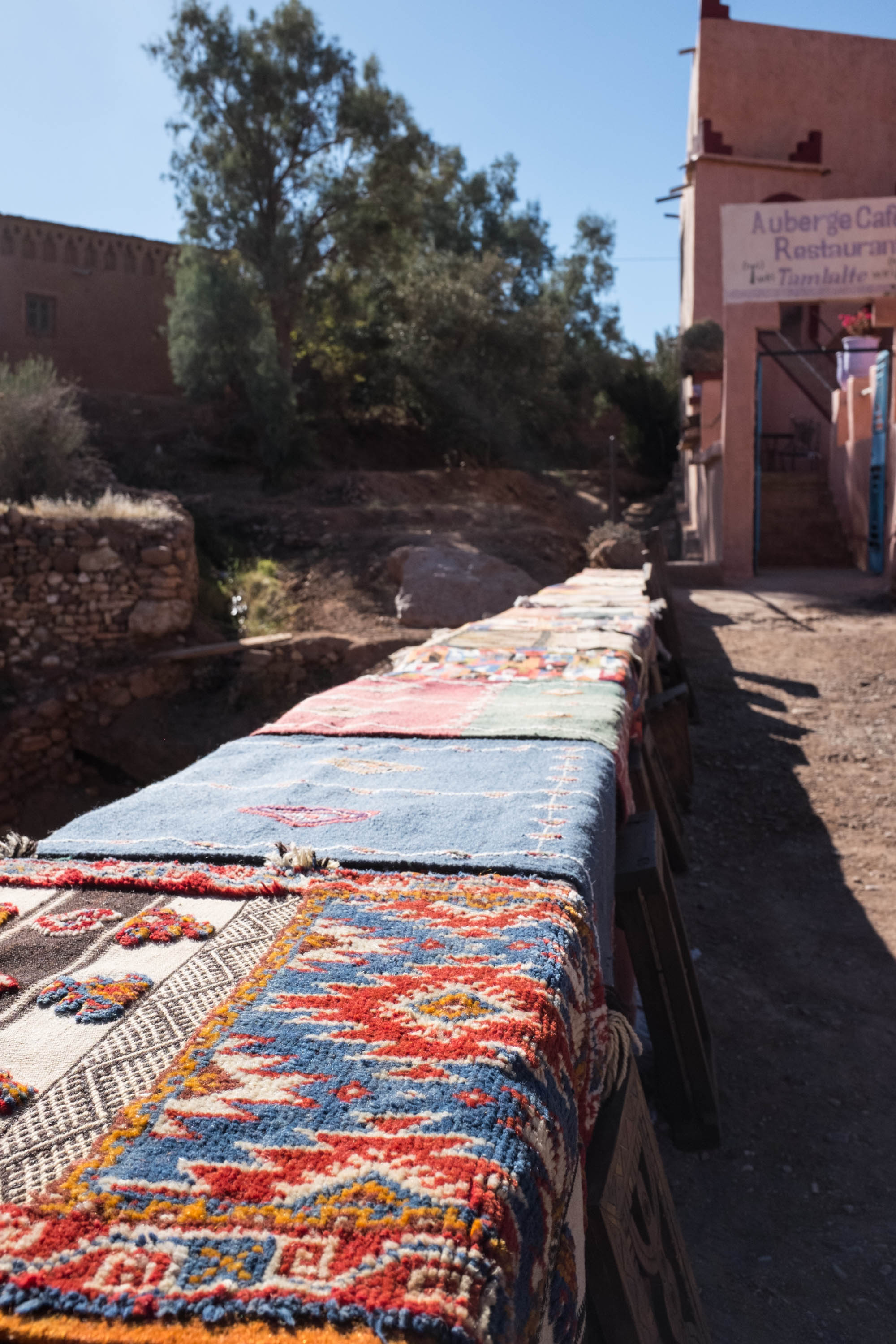
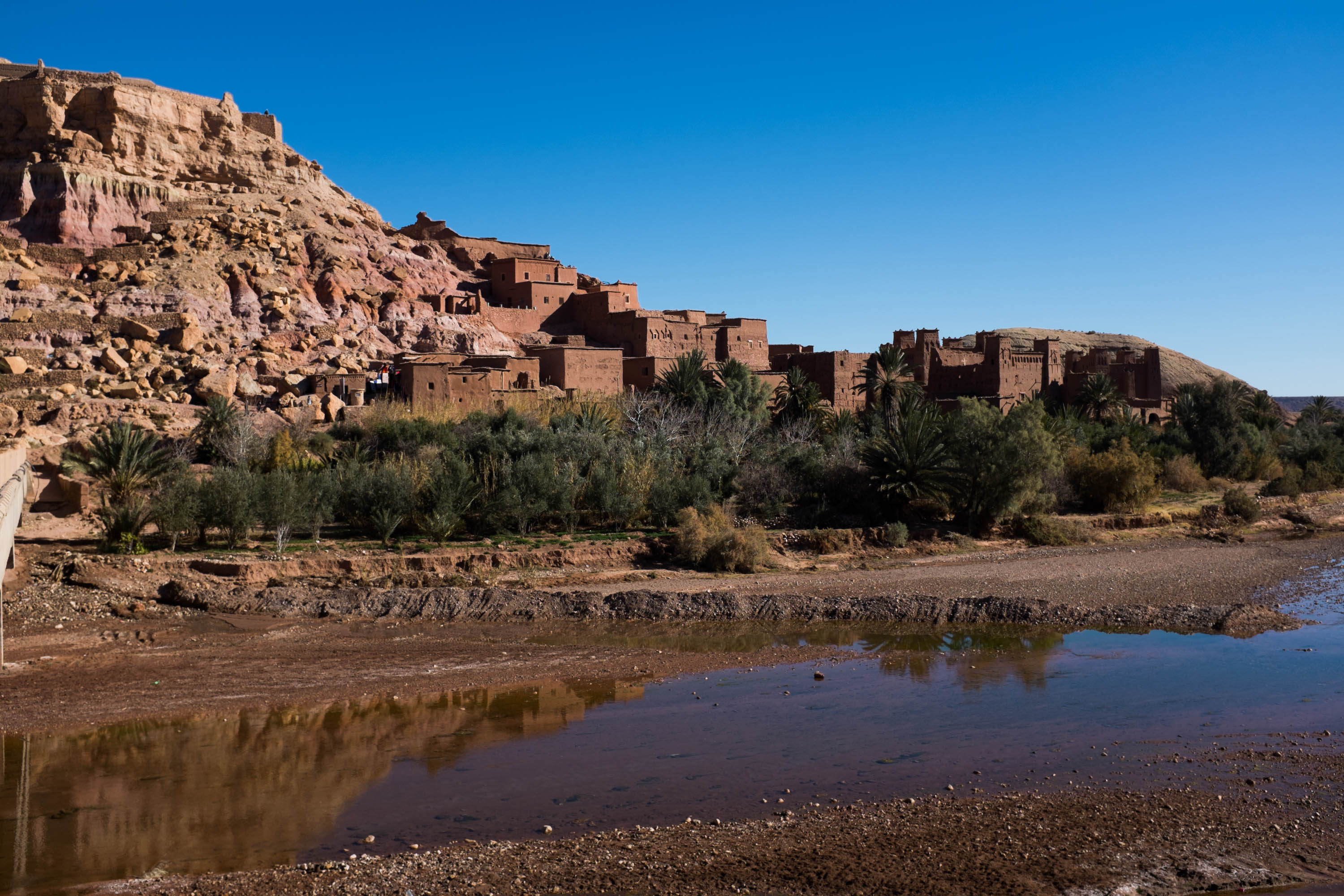
There are those that eke out existence against the unfortunate odds of this region. Few travelers come by car, but for those who do, there are colors, spices, textures and little joys to be had.
I do have to wonder at the families who live on in these valleys tucked away in the High Atlas Mountains of Morocco. The presence of castles and cultivated date palms proves the region to once have been a coveted place to call home. Perhaps the residents continue on in determination: why then, and why not now?
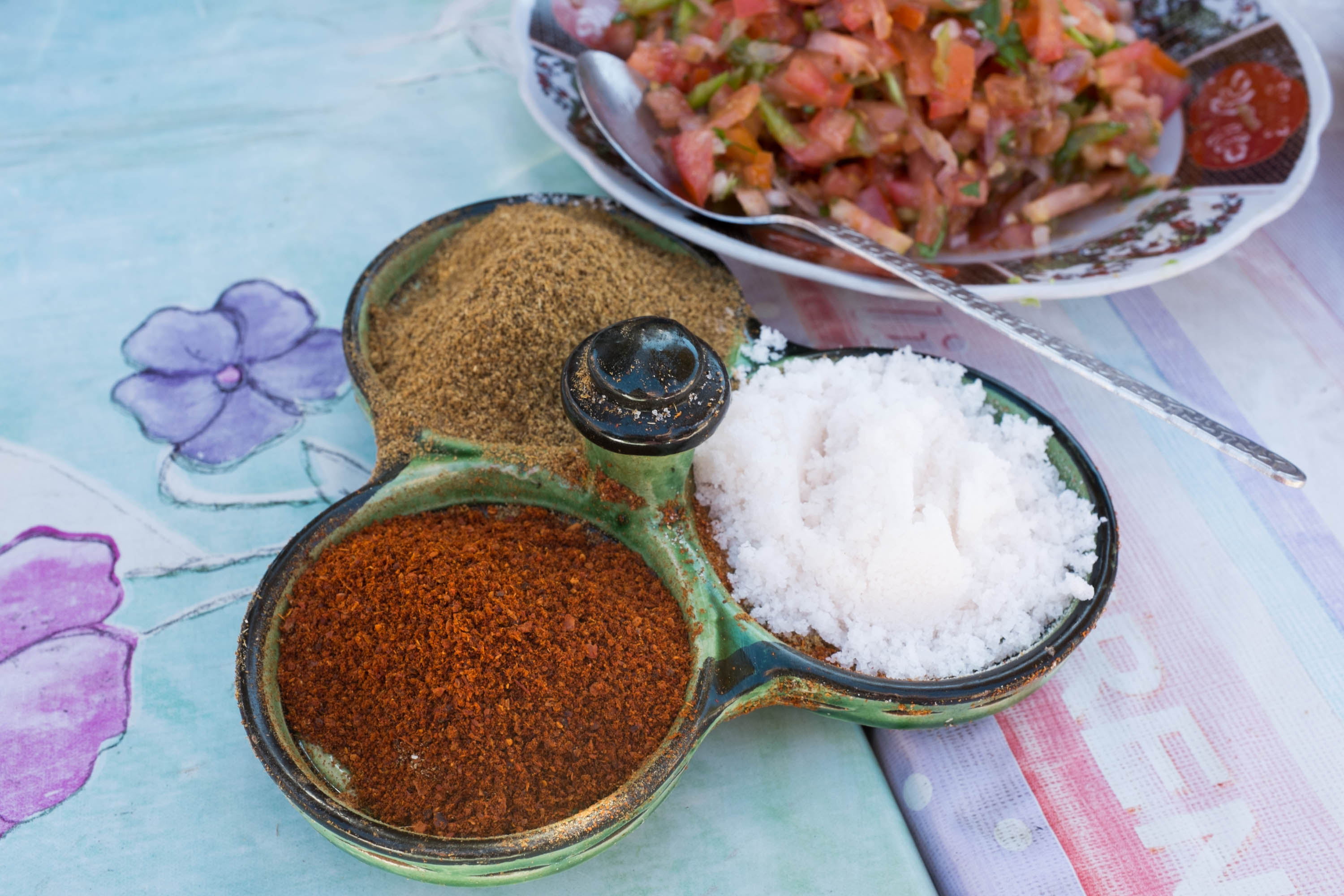
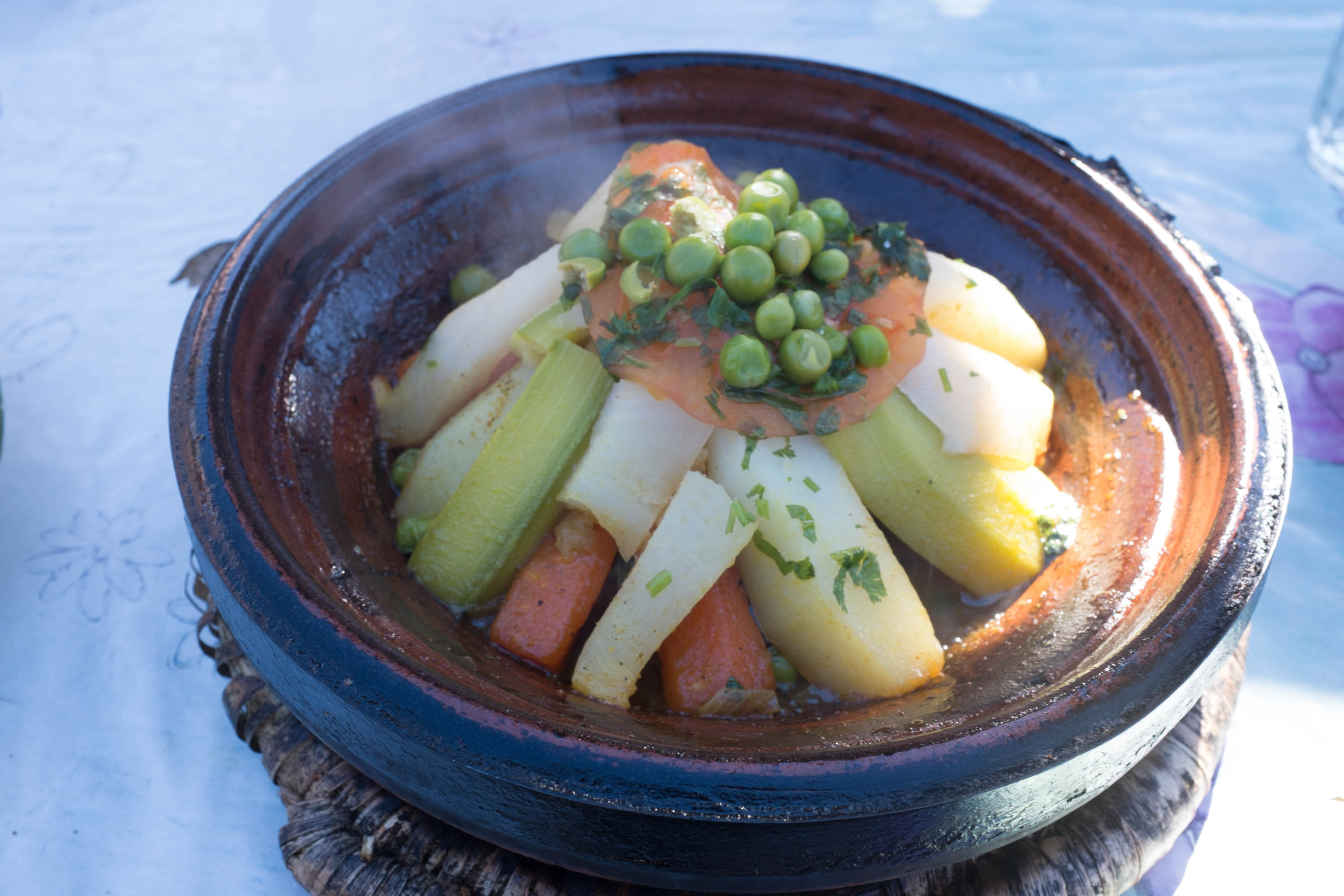
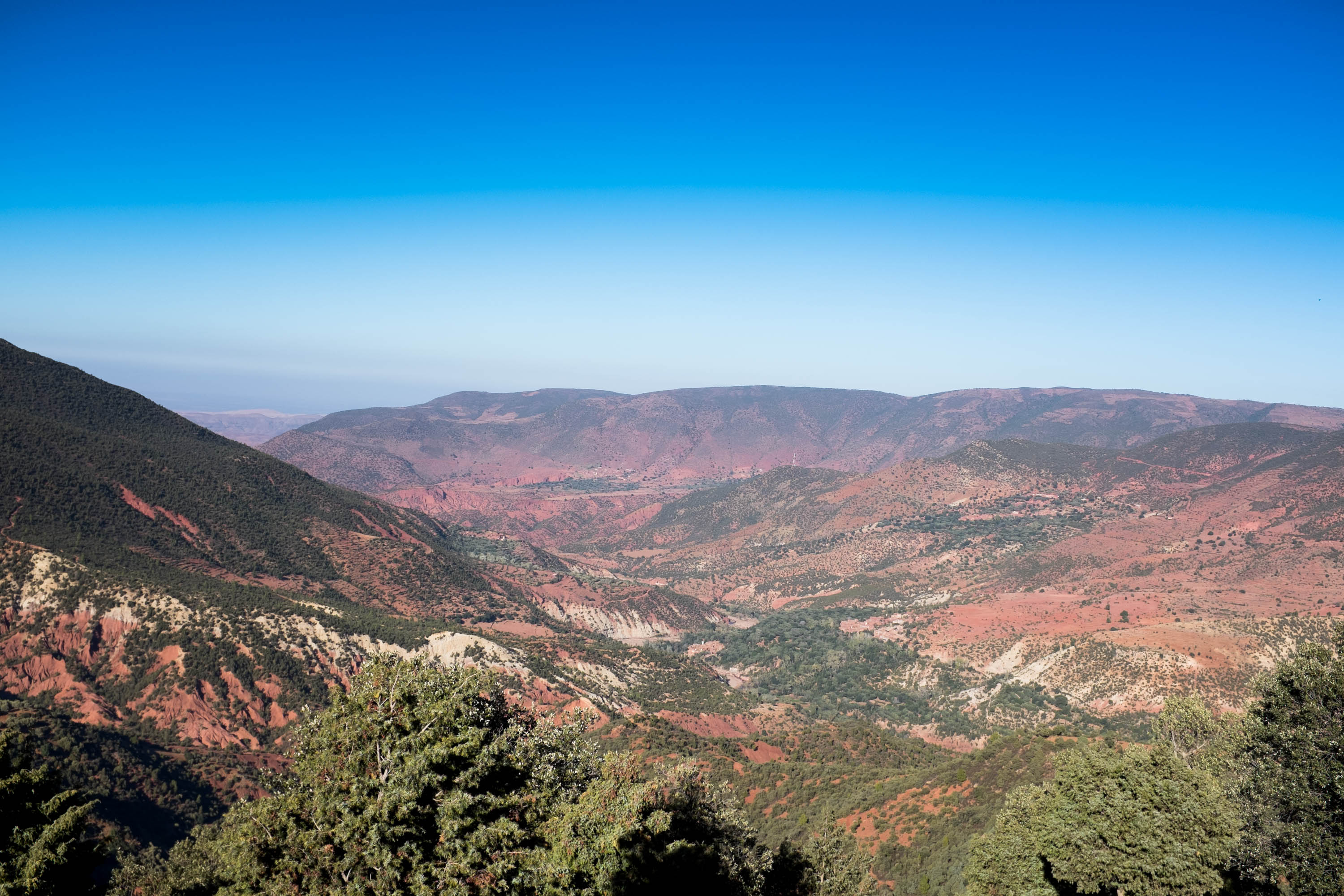
[Tweet “Check out these snapshots from Morocco’s Sahara desert and surrounding scenes! via @daisylinshih #travel”]
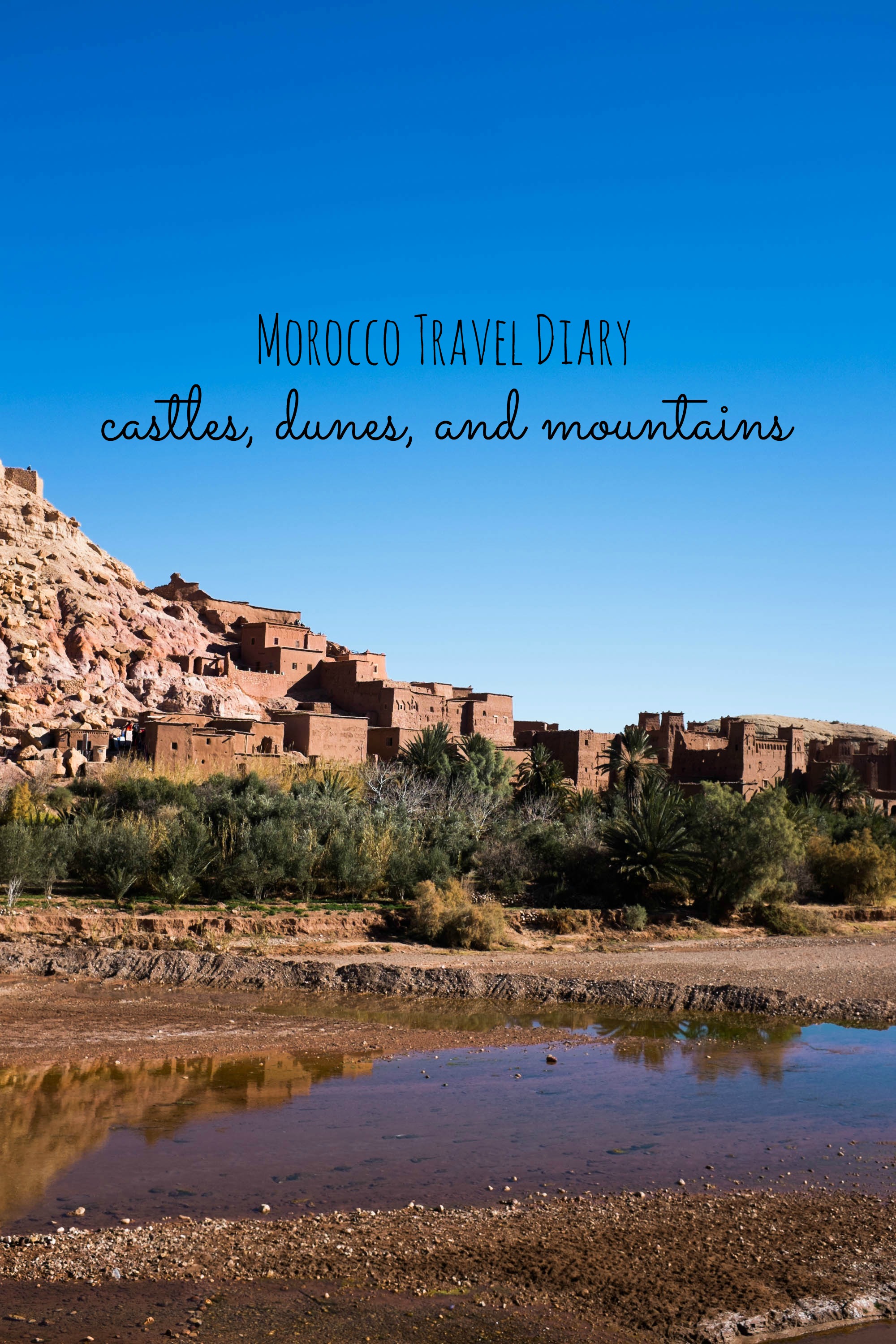

Well info, I appreciate to heart and soul about desert travelings why not this travels are outstanding moment for visitors where they has to more and more collect to fun or enjoy and experience into the desert locations. So most of visitors should be more encourage to see them for travels. Thanks for exciting information.
Omg I love this post Daisy!! Beautiful photos and so well written too! I love the way you describe the sand and the little details about the camels (btw, I think they’re so cute!). I can’t believe you guys slept night out there…. seems soooo remote but an once-in-a-lifetime experience for sure. And that road to the gorge is crazy! Great capture!
These are beautiful photos!!! I love the camels.
Thanks!! I’ll check it out. 🙂
Thank you Marina! And dune sledding is fabulous– all the fun without the cold! 😉
Thank you Cassandra! I appreciate that– it was so easy to take photos of such a pretty place!
Thank you Gina!! It was such a fun trip– I realized how little I knew about it so I’m only just scratching the surface!
Unbelievable photos! And dune sledding looks like so much fun 🙂
Oh wow! What a gorgeous adventure! Love your photos – they are stunning. 🙂
I do! At http://emmiejoanna.blogspot.co.uk/2016/02/marrakech-i-love-you.html – I went to Marrakech and adored it there. I haven’t read all of yours yet but it looks like you went to a lot of places and had a really good explore of Morocco
So breathtaking! I’m so excited to learn more about Morocco little by little by reading your posts. Sounds like an amazing experience. I love hearing all the parts of your trip!
Hey Emmie! Thank you so much for stopping by! Also, I hope you enjoyed your time in other parts of Morocco! Do you have any blog posts about it? 🙂
Indeed! Thanks for reading, friend! 🙂
Hey Lauren!! How are you? I’m so glad you stopped by. Our adventure was so much fun. I hope you’re doing well. 🙂
Thank you Kaelene!! The photos were so fun to take!
Hi 🙂 your photo’s are stunning! Your trip sounds wonderful. I visited Morocco recently but didn’t go to the desert, definitely want to go back there and do this. Sand dunes and starry skies!
What an incredible experience! And such gorgeous pictures Daisy!
Hey Daisy! So glad I found time to check back in to your blog. It looks like quite the adventure! And great photos and writing, of course. Hope all is well!
The world is so beautiful. Thank you for sharing, Daisy!
It really was! Such a thrill. Thanks for reading, Emily!
It was gorgeous! And Morocco is certainly a nation of crafters!!
Thank you Kat! Taking good photos was easy. 😉
That sounds incredible! As always, the photos are gorgeous.
xoxo
Kat
Oh wow! That looks like so much fun! I want to ride a camel! And those beautiful tapestries! Wow!
What an incredible experience!